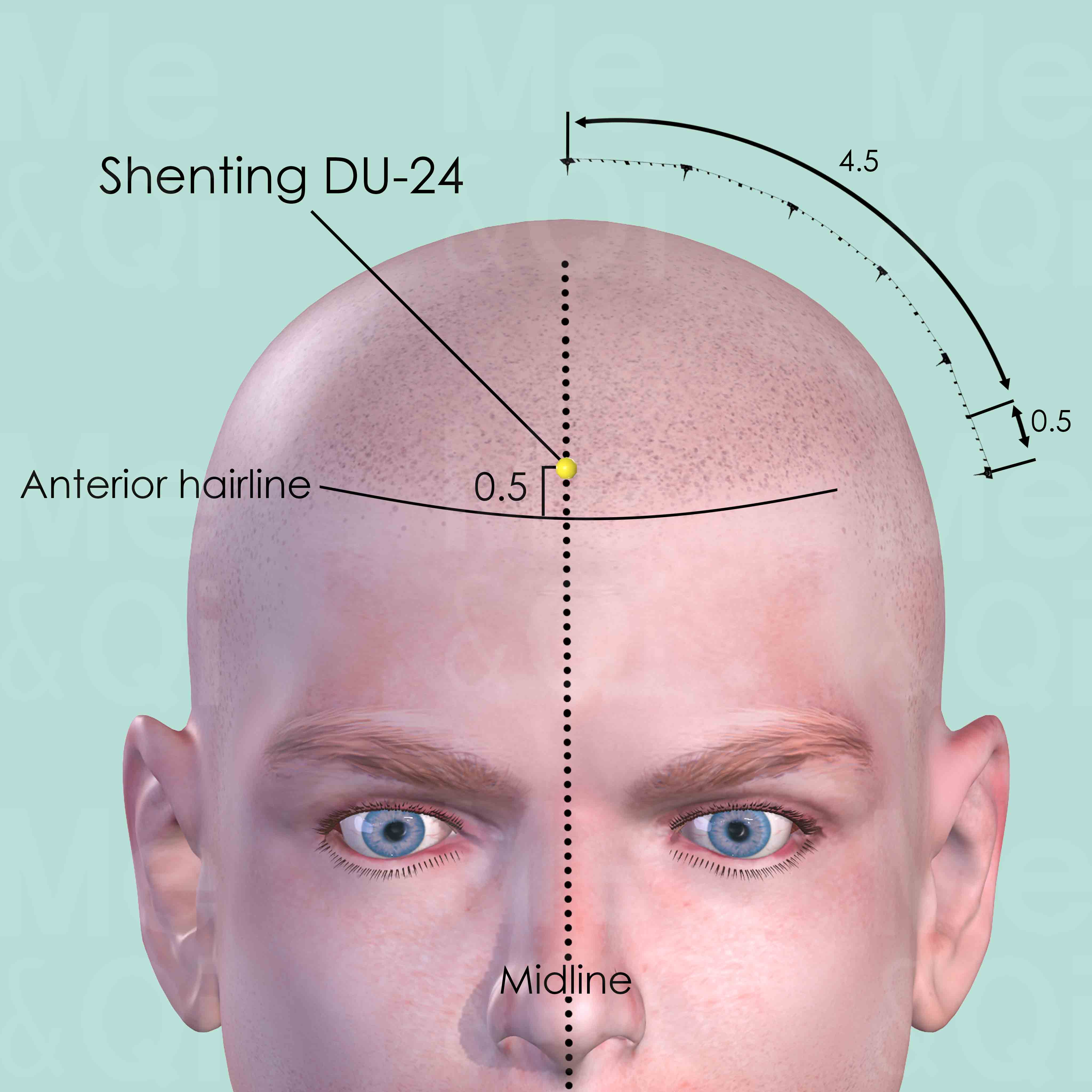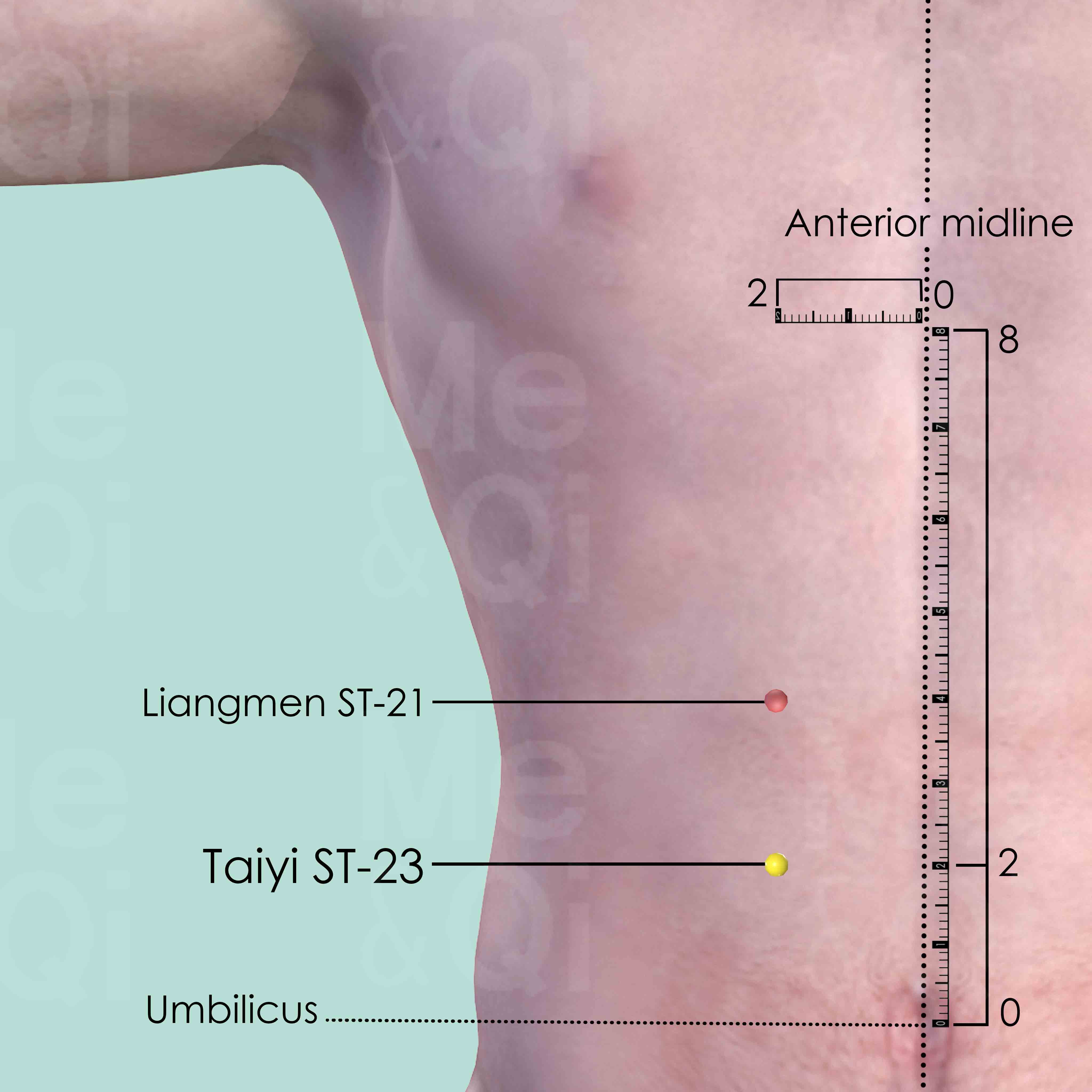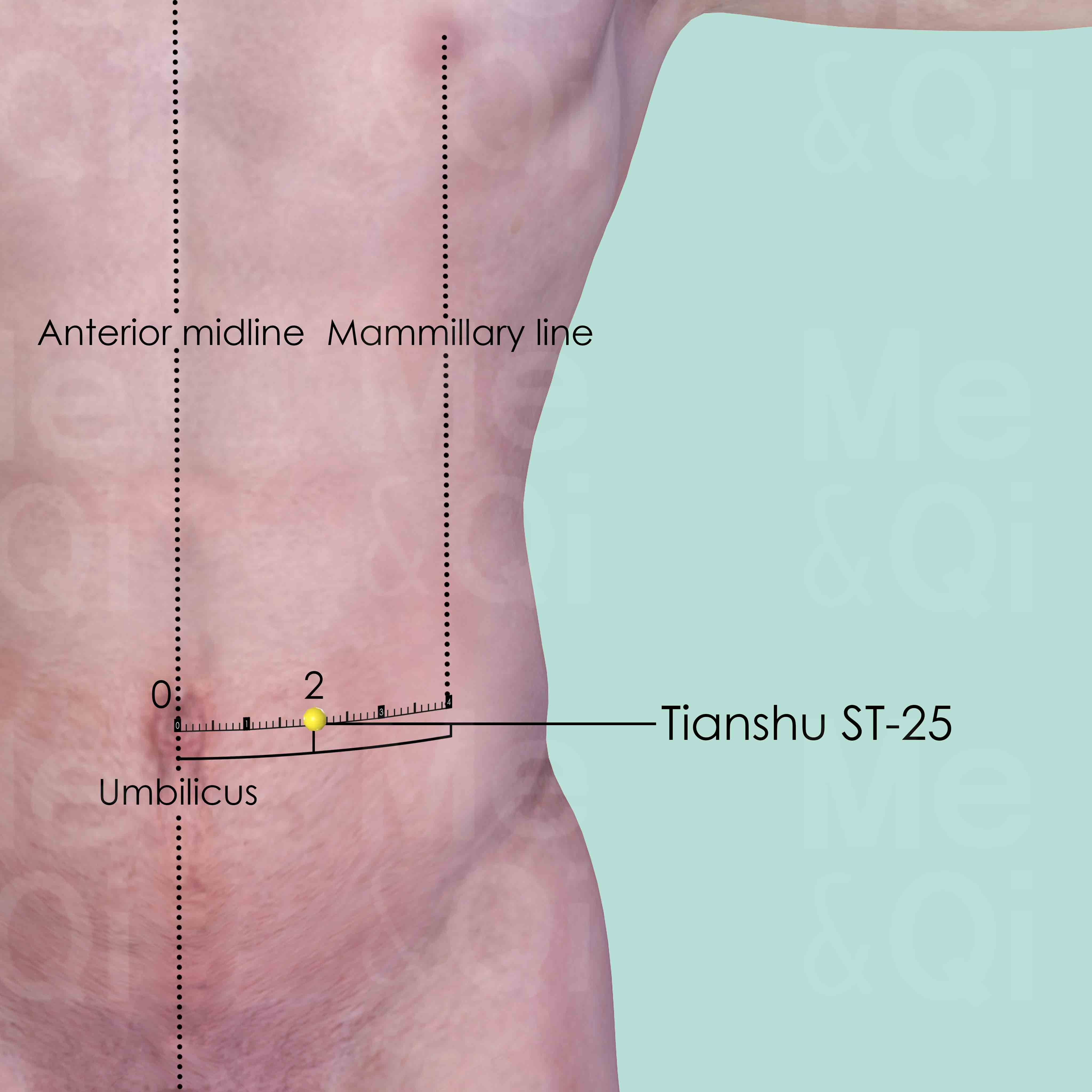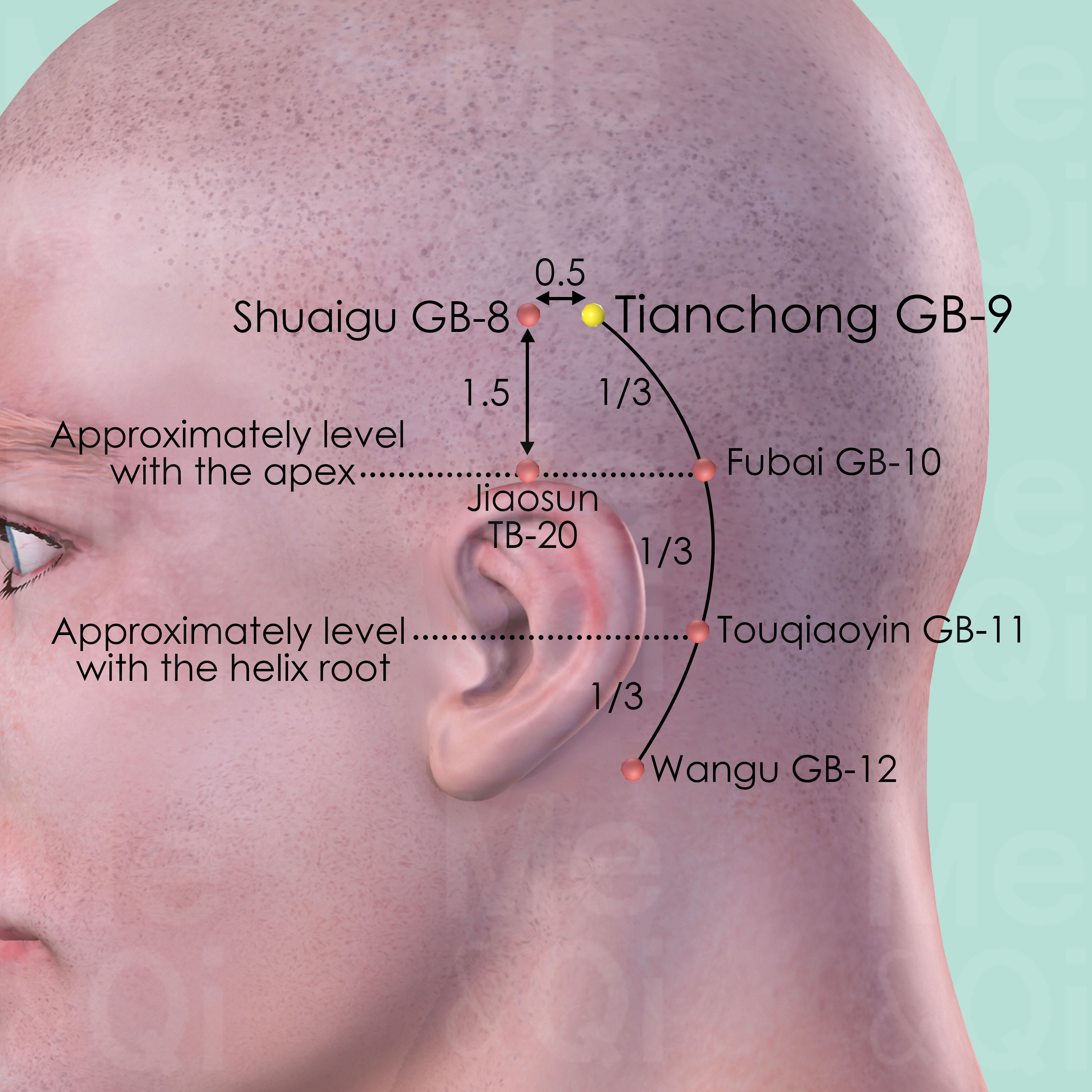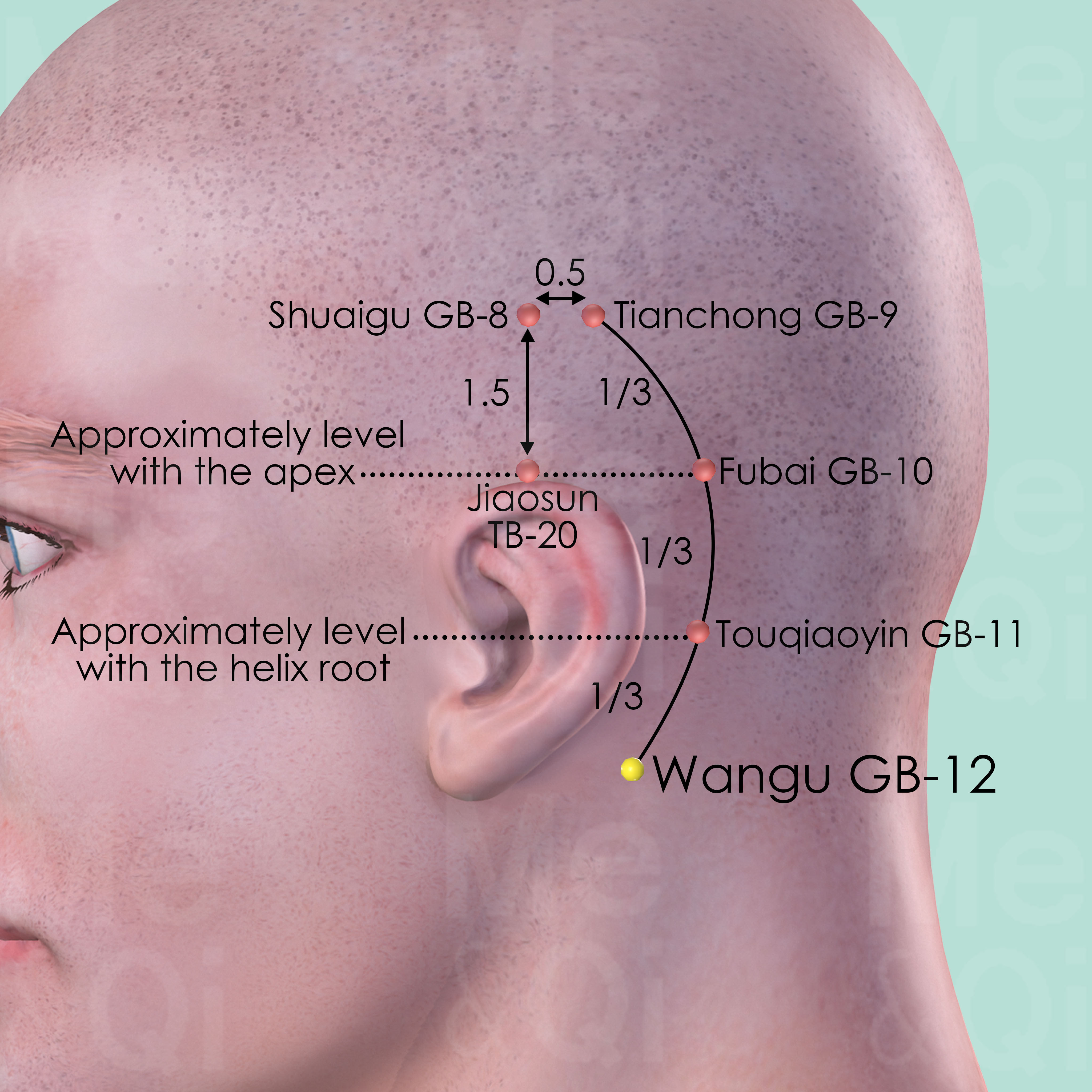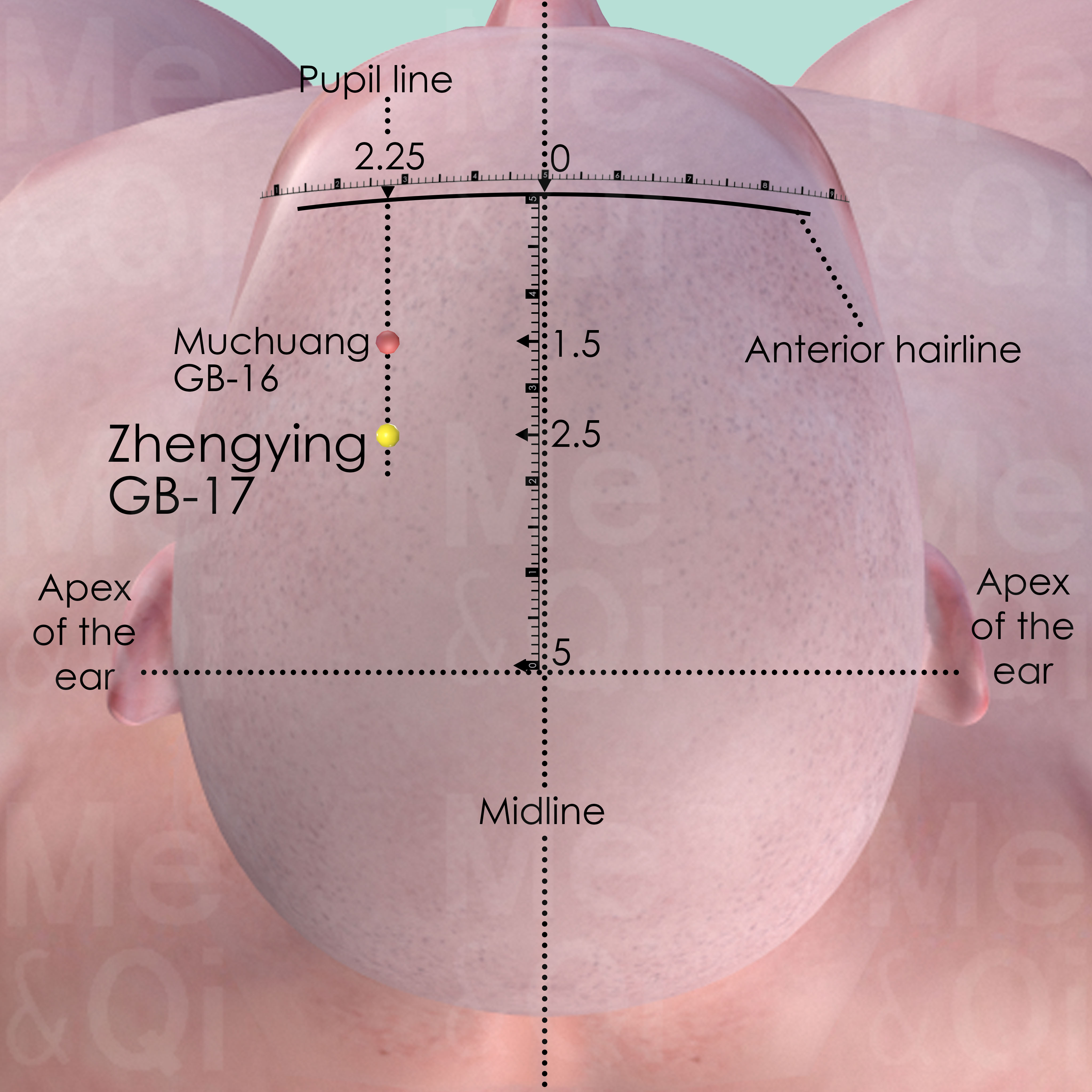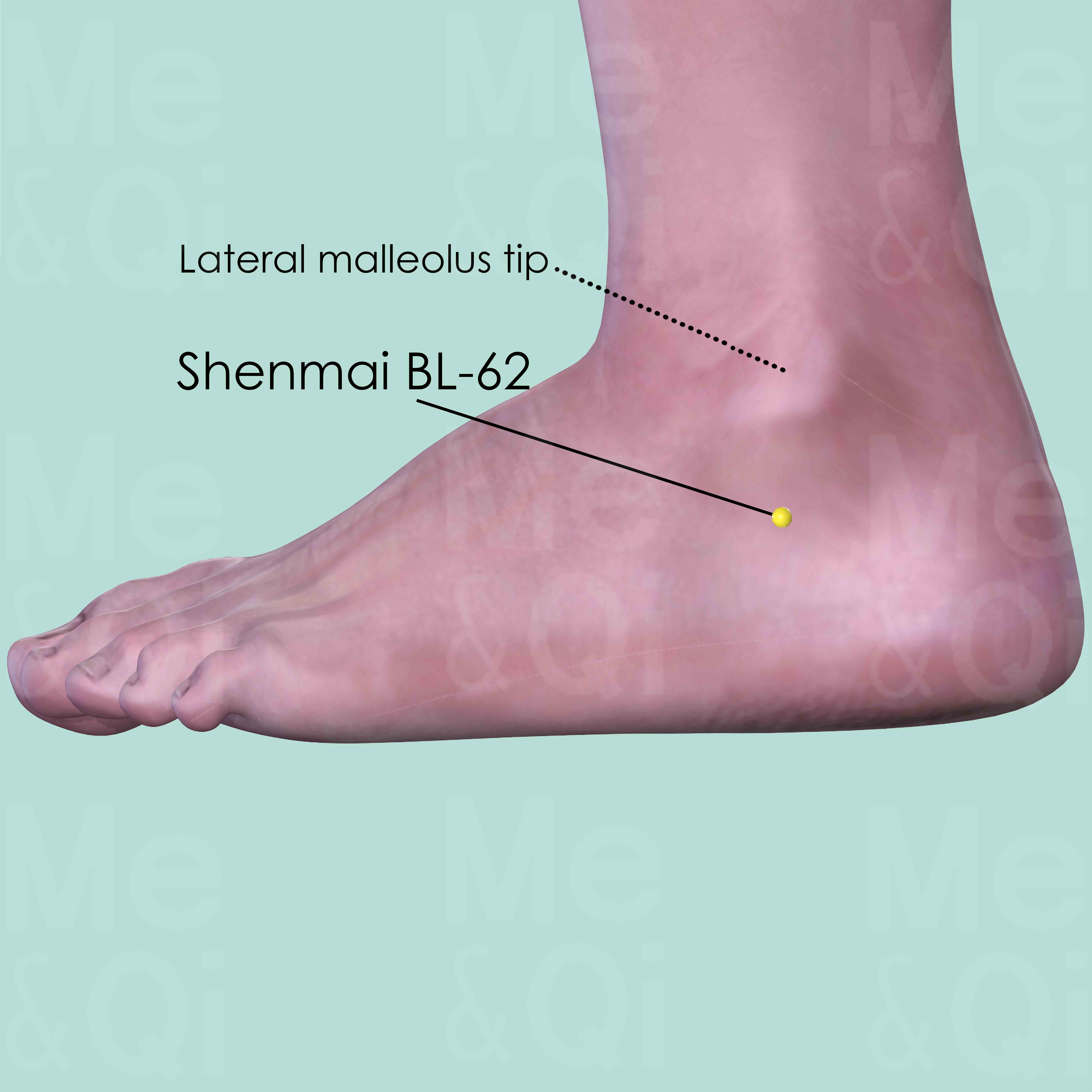Maniaaccording to TCM
Symptom family: Mental Health Disorders
Root Causes of Mania in TCM
Explore below more details about what might cause Mania according to TCM.
- By Syndrome
- By Organ
- Blood Stasis
- Mind Disturbance
- Heat
- Heart
Blood Stasis
Blood Stasis in TCM is a concept where the blood flow in the body is not as smooth or efficient as it should be. Imagine a river that's supposed to flow freely, but instead, it's getting blocked or moving too slowly in some parts. This can lead to various health issues, like pain that feels sharp or stabbing, dark bruises, and a complexion that looks purplish. TCM believes that good health relies on the smooth and vibrant flow of Qi and blood throughout the body, so when blood gets stuck, it's like a traffic jam in your body, leading to discomfort or health problems.... see more
Blood Stasis Patterns That Can Lead to Mania
| Pattern Name | Relevant Symptoms | Relevant Formulas |
|---|---|---|
| Heart Blood Stagnation | Mania, Stabbing chest pain, Chest constriction, Feeling of oppression of the chest | Xiao Tiao Jing Tang |
Mind Disturbance
In TCM "Shen" refers to the mind or spirit, and a Shen disturbance is a pattern of disharmony that affects the mental and emotional state. This concept reflects the TCM belief in the deep interconnectedness of mind and body. Symptoms of Shen disturbance can vary widely but often include anxiety, insomnia, restlessness, confusion, or in severe cases, hallucinations or delirium. These symptoms indicate an imbalance in the body's energies affecting the heart, which in TCM is not only the center of blood circulation but also the seat of the mind and consciousness. The root of Shen disturbance can be traced to various factors, including emotional stress, physical illness, or an imbalance in fundamental substances like Qi, Yin, or Yang.... see more
Mind Disturbance Patterns That Can Lead to Mania
| Pattern Name | Relevant Symptoms | Relevant Formulas |
|---|---|---|
| Heat victorious agitating Blood | Manic behavior, Restlessness, High fever, Mania, Macules, Vomiting blood, Nosebleeds, Hematochezia, Hematuria... see more | Xi Jiao Di Huang Tang |
Heat
In TCM "Heat" signifies an excess of Yang energy, leading to an imbalance where heat predominates over the body's cool Yin aspects. This condition is metaphorically akin to an internal over-heating. Symptoms indicative of Heat can include feelings of warmth, fever, sweating, irritability, red face, thirst with a preference for cold drinks, and a rapid pulse. The tongue may appear red with a yellow coating. Unlike the common interpretation of heat in terms of temperature, in TCM, it represents a state of hyperactivity or inflammation in the body.... see more
Heat Patterns That Can Lead to Mania
| Pattern Name | Relevant Symptoms | Relevant Formulas |
|---|---|---|
| Heat victorious agitating Blood | Manic behavior, Restlessness, High fever, Mania, Macules, Vomiting blood, Nosebleeds, Hematochezia, Hematuria... see more | Xi Jiao Di Huang Tang |
Heart
In TCM the Heart is considered the "emperor" of all organs, primarily responsible for governing Blood and housing the mind, known as "Shen." It plays a crucial role in maintaining mental-emotional equilibrium and controlling the circulation of Qi and blood throughout the body. When the Heart is imbalanced or malfunctions in TCM, it can lead to a range of issues like heart palpitations, insomnia, dream-disturbed sleep, anxiety, and a flushed complexion. Emotional disturbances such as excessive joy or lack of joy are also seen as signs of Heart disharmony. These symptoms reflect not just physical heart conditions but also the state of one's Shen, indicating the interconnectedness of physical and emotional well-being in TCM.... see more
Heart Patterns That Can Lead to Mania
| Pattern Name | Relevant Symptoms | Relevant Formulas |
|---|---|---|
| Heart Blood Stagnation | Mania, Stabbing chest pain, Chest constriction, Feeling of oppression of the chest | Xiao Tiao Jing Tang |
TCM Herbal Formulas for Mania
Explore below some TCM herbal formulas used to address mania, organized by cause and by formula type.
- By Cause
- By Formula Type
- Blood Stasis
- Mind Disturbance
- Heat
- Formulas that invigorate blood and dispel blood stagnation
- Formulas that regulate blood
- Formulas that sedate and calm the mind
- Formulas that purge heat accumulation
- Formulas that clear nutritive-level heat
Top Formula for Blood Stasis:
Xiao Tiao Jing Tang
Suitable for Blood Stasis patterns that may cause mania, such as Heart Blood Stagnation
Learn moreTop Formula for Mind Disturbance:
Xi Jiao Di Huang Tang
Suitable for Mind Disturbance patterns that may cause mania, such as Heat victorious agitating Blood
Learn moreTop Formula for Heat:
Xi Jiao Di Huang Tang
Suitable for Heat patterns that may cause mania, such as Heat victorious agitating Blood
Learn moreFormulas that regulate Blood
These formulas are suitable for some mania-causing patterns like Heart Blood Stagnation.
One such formula is Xiao Tiao Jing Tang, with white peony root as a key herb.
Formulas that clear nutritive-level Heat
These formulas are suitable for some mania-causing patterns like Heat victorious agitating Blood.
One such formula is Xi Jiao Di Huang Tang, with water buffalo horn as a key herb.
Formulas that invigorate Blood and dispel Blood Stagnation
Mania can be treated by these formulas if it arises from poor blood circulation or stagnation of blood, which often manifests in pain or swelling.
One such formula is Di Dang Tang, with leech as a key herb.
Formulas that sedate and calm the Mind
Mania can be treated by these formulas when it stems from an agitated or disturbed mental state, requiring calming and mind-stabilizing actions.
One such formula is Sheng Tie Luo Yin, with oxidized iron filing as a key herb.
Formulas that purge Heat accumulation
Mania can be treated by these formulas if it arises from an excess of internal heat, needing actions that clear heat and reduce its intensity.
One such formula is Xiao Cheng Qi Tang
Acupoints for Mania
Explore below some acupoints used to address mania, organized by meridian.
- By Meridian
- Governing Vessel
- Stomach Channel
- Gall Bladder Channel
- Pericardium Channel
- Bladder Channel
- Kidney Channel
- Large Intestine Channel
- Small Intestine Channel
- Triple Burner Channel
- Heart Channel
- Liver Channel
- Lung Channel
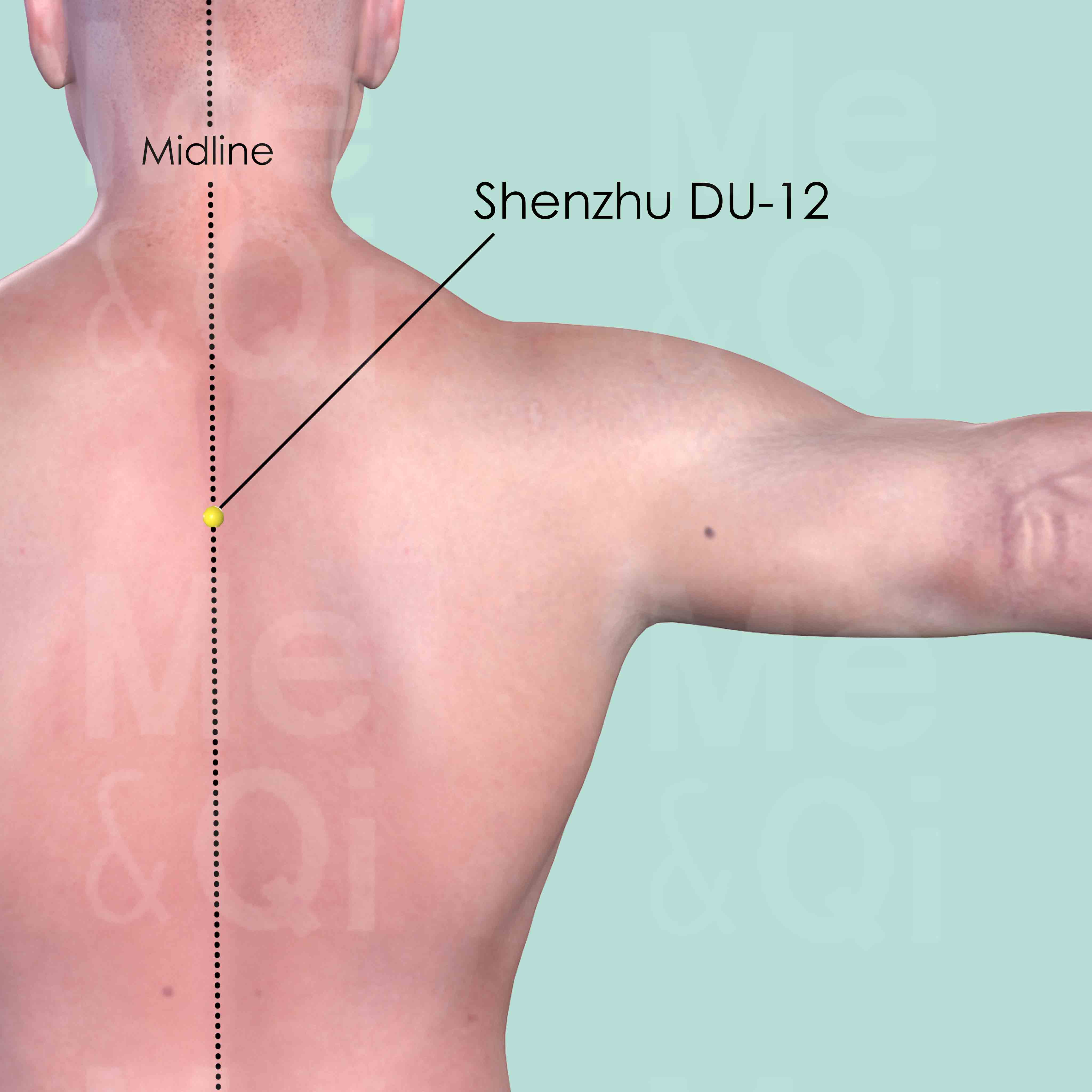
Shenzhu DU-12
On the back midline, in the depression below the spinous process of the 3th thoracic vertebra (T3).
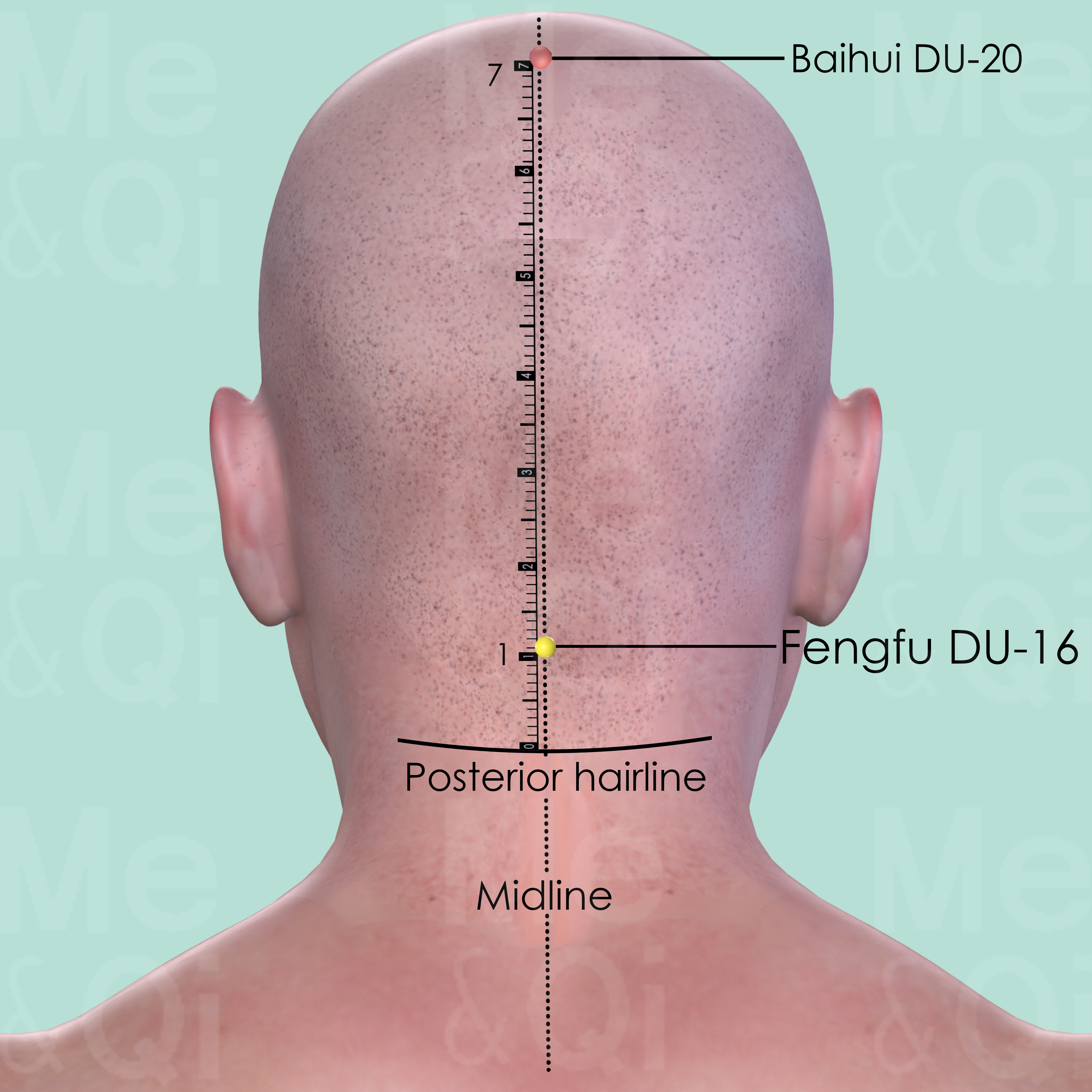
Fengfu DU-16
Directly below the external occipital protuberance, in the depression between the origins of the trapezius muscle.
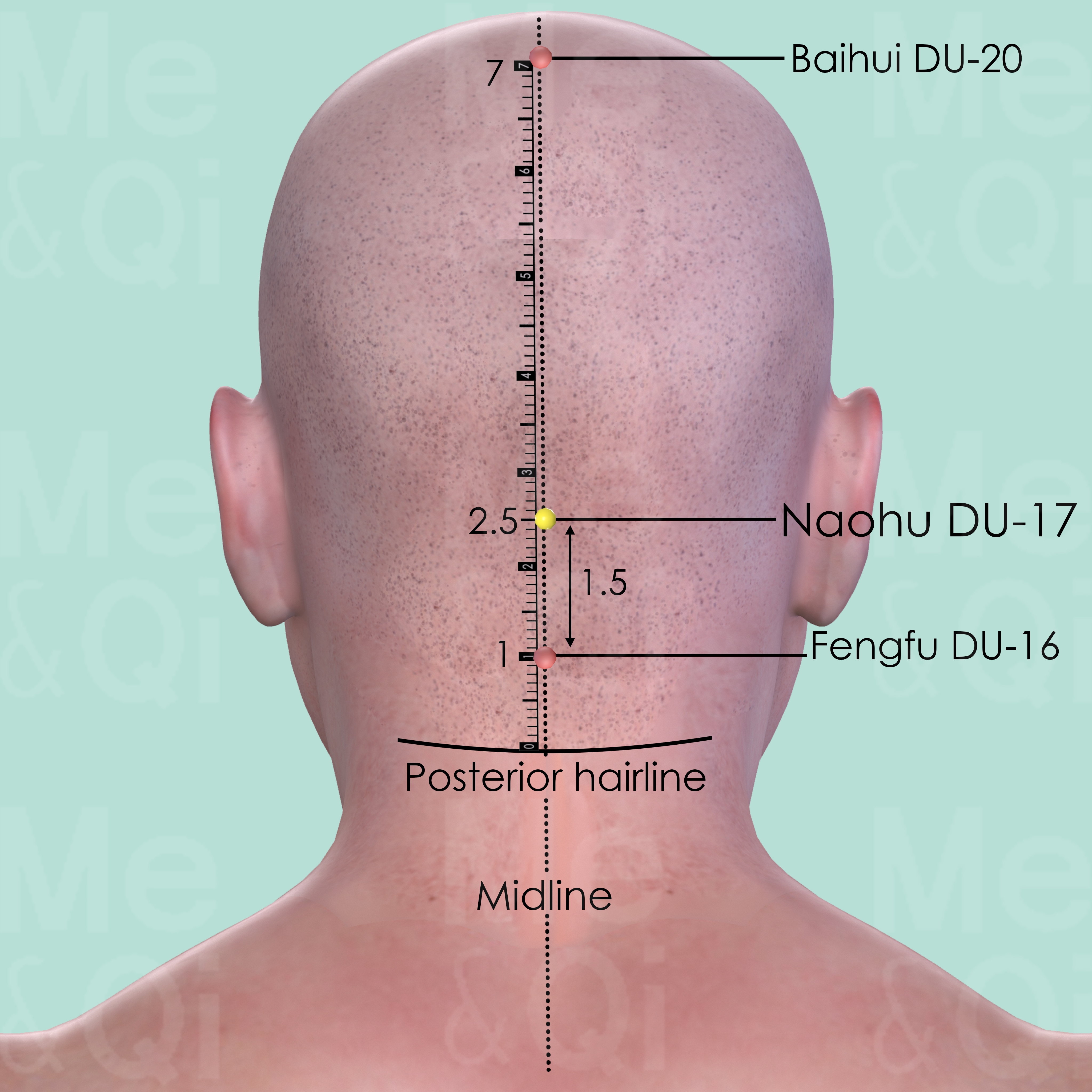
Naohu DU-17
1.5 cun above Fengfu DU-16 or 2.5 cun above the posterior hairline, in a depression superior to the external occipital protuberance.
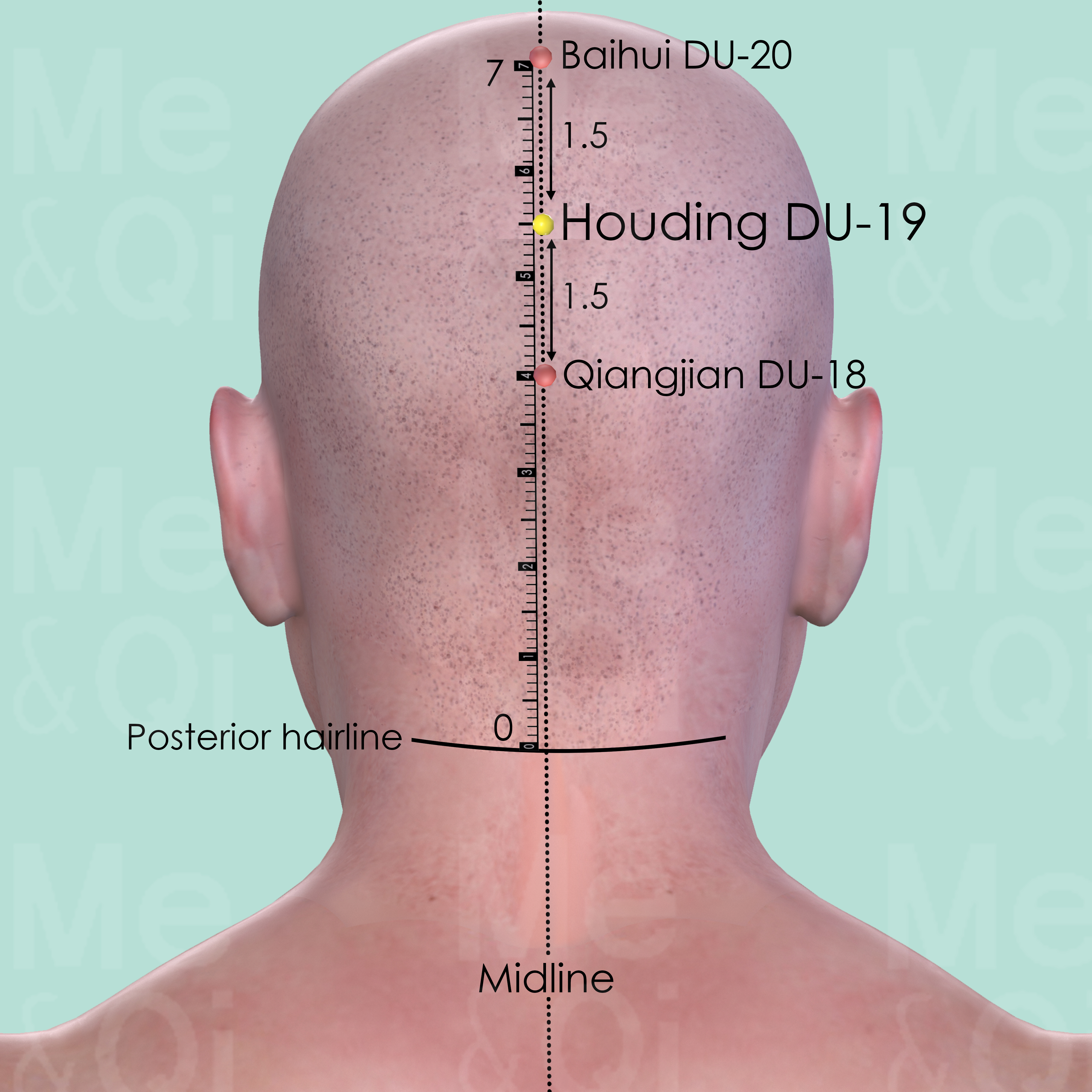
Houding DU-19
On the head midline, 1.5 cun above Qiangjian DU-18 or 1.5 cun posterior to Baihui DU-20.
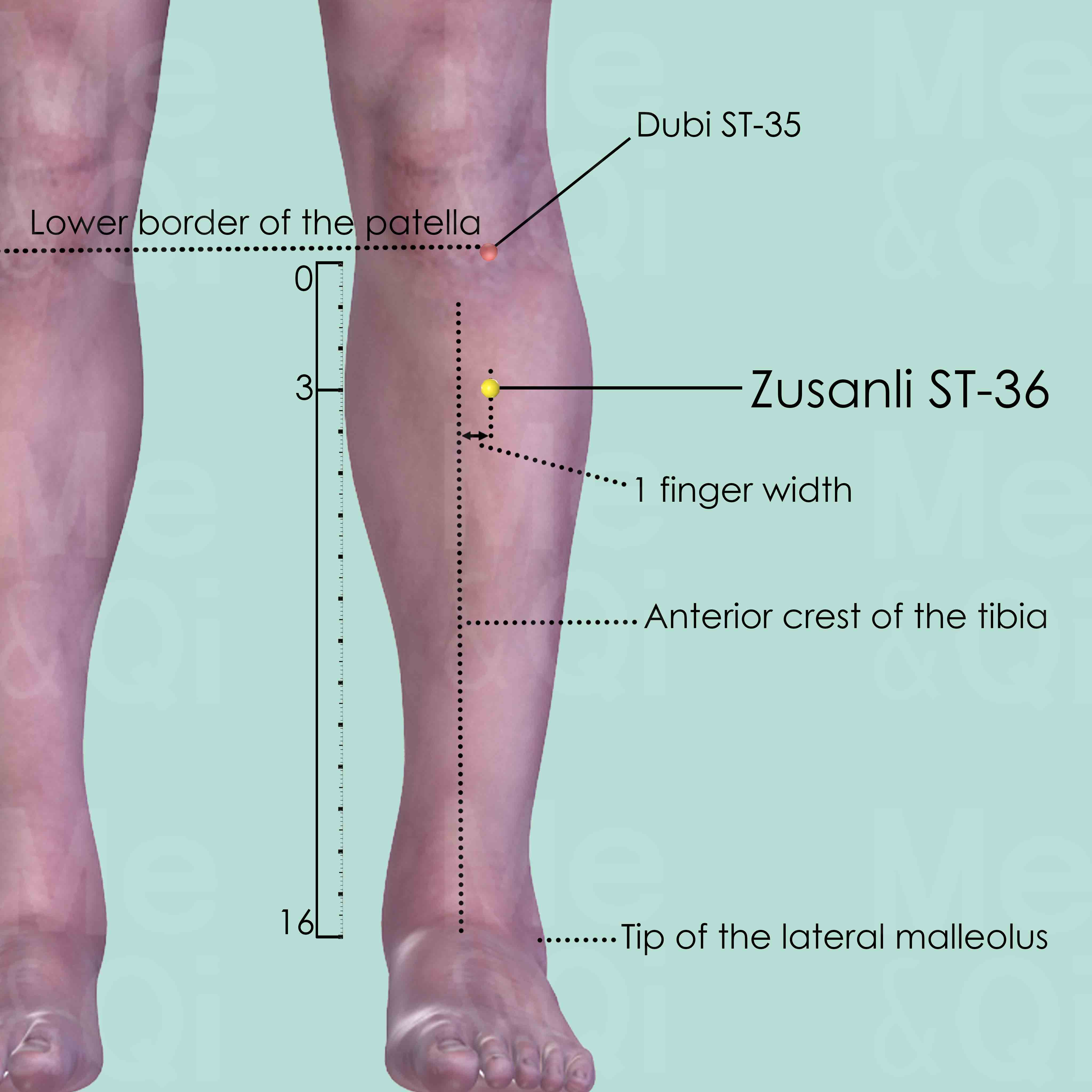
Zusanli ST-36
3 cun below Dubi ST-35, one finger breadth lateral to the anterior crest of the tibia, on the tibialis anterior muscle.
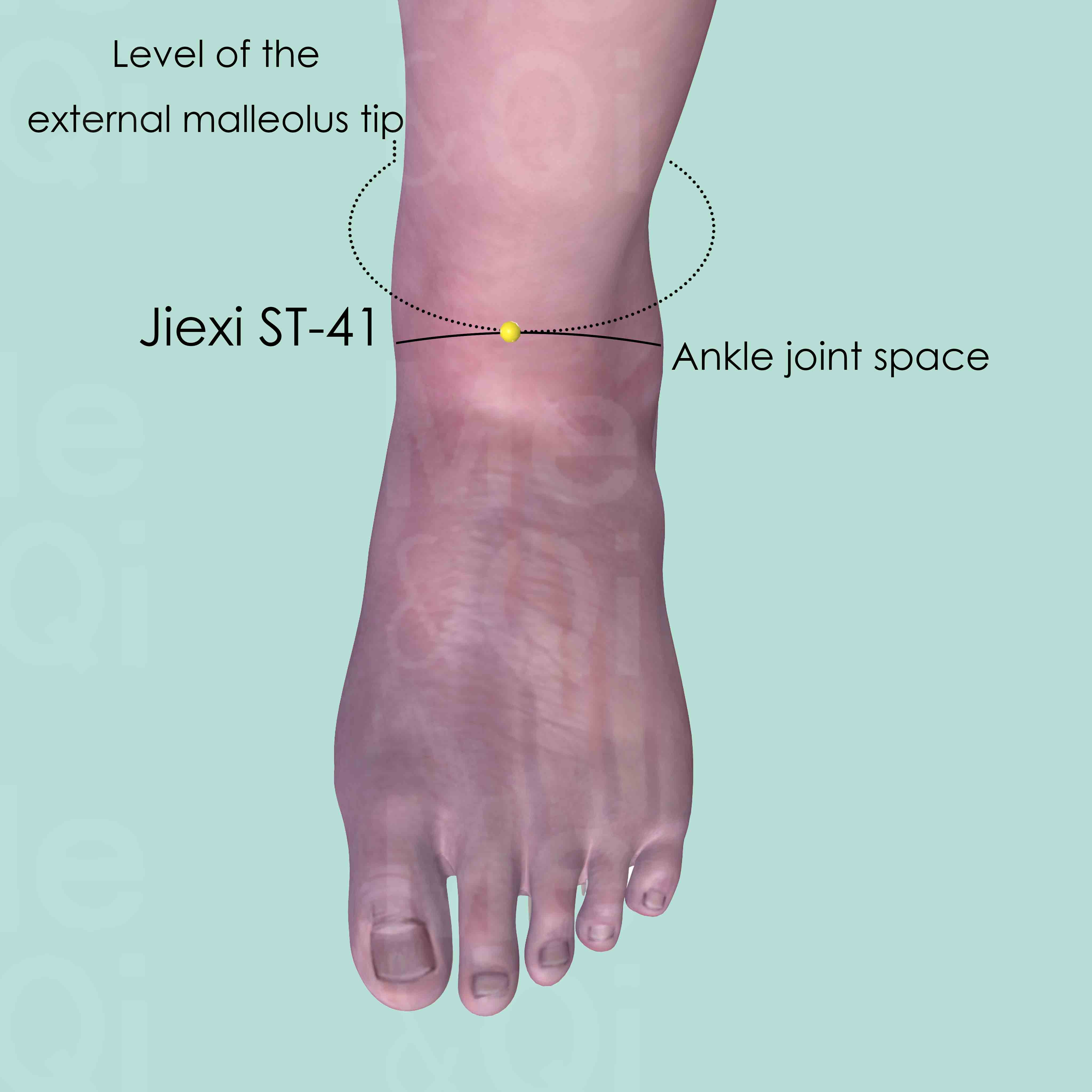
Jiexi ST-41
At the junction of the dorsum of the foot and leg, between the tendons of extensor digitorum and the extensor hallucis longus muscle. Approximately at the level of the tip of the external malleolus.
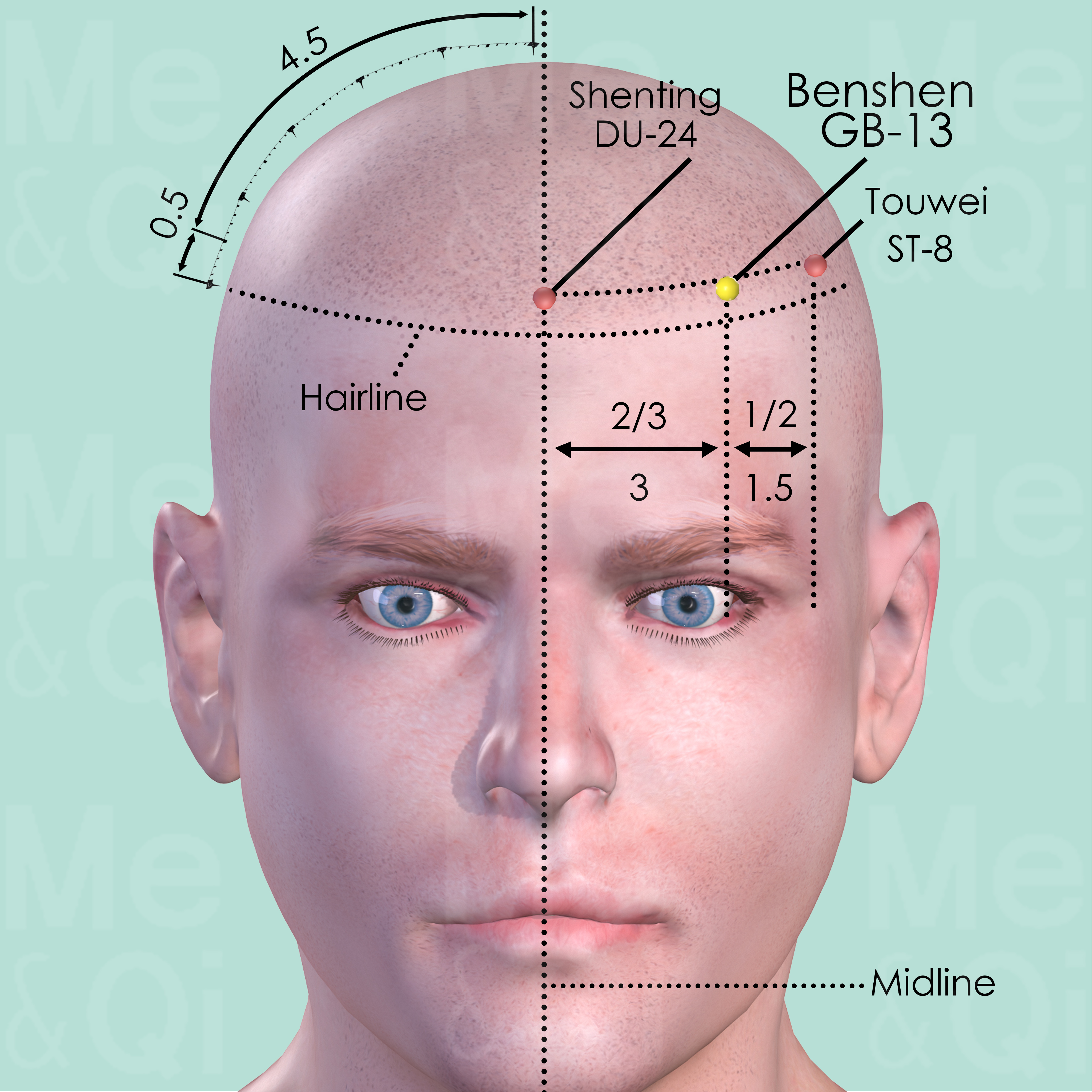
Benshen GB-13
0.5 cun within the hairline of the forehead, at the junction of the medial two-third and lateral third of the distance from Shenting DU-24 to Touwei ST-8.
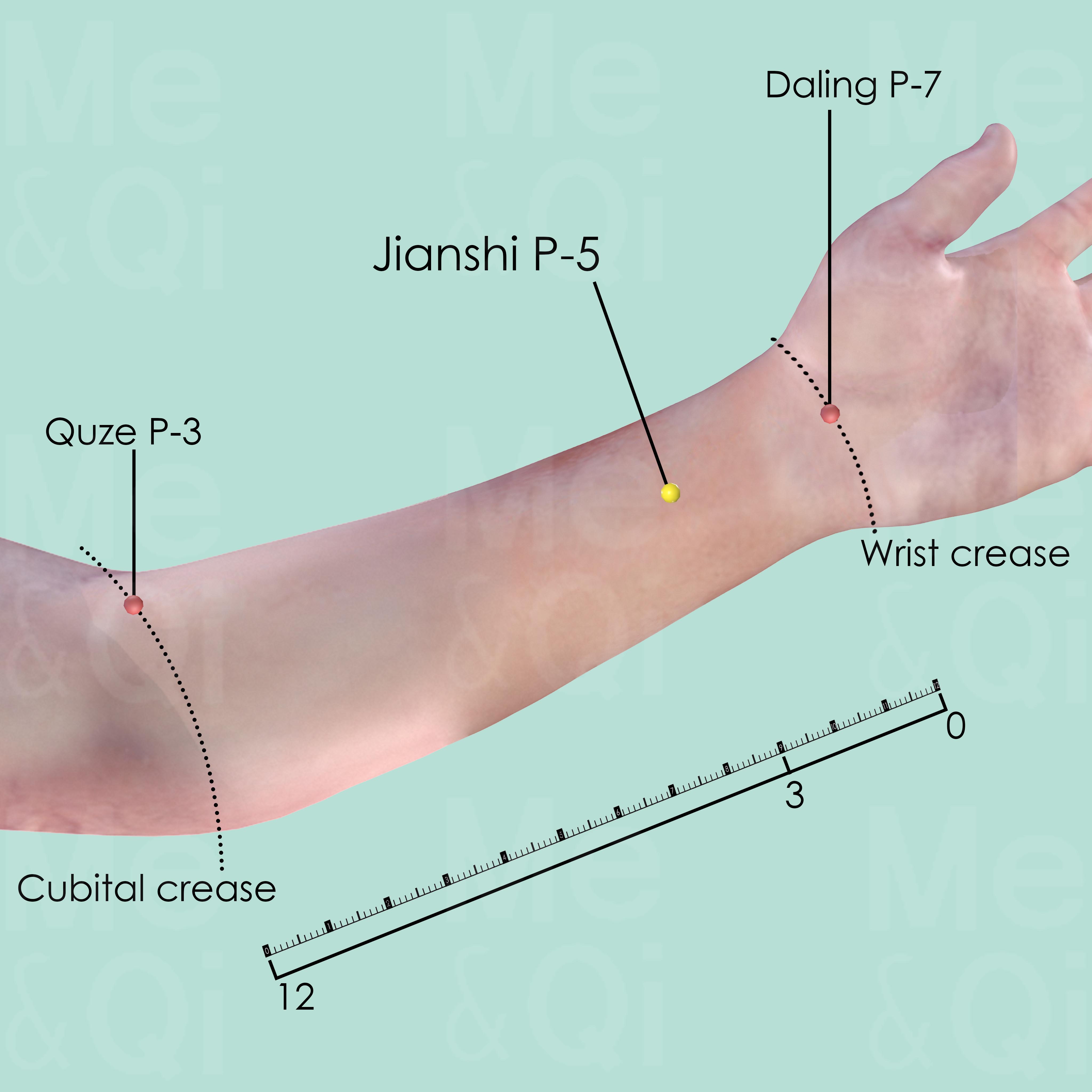
Jianshi P-5
3 cun above the transverse crease of the wrist, between the tendons of palmaris longus and flexor carpi radialis muscle.
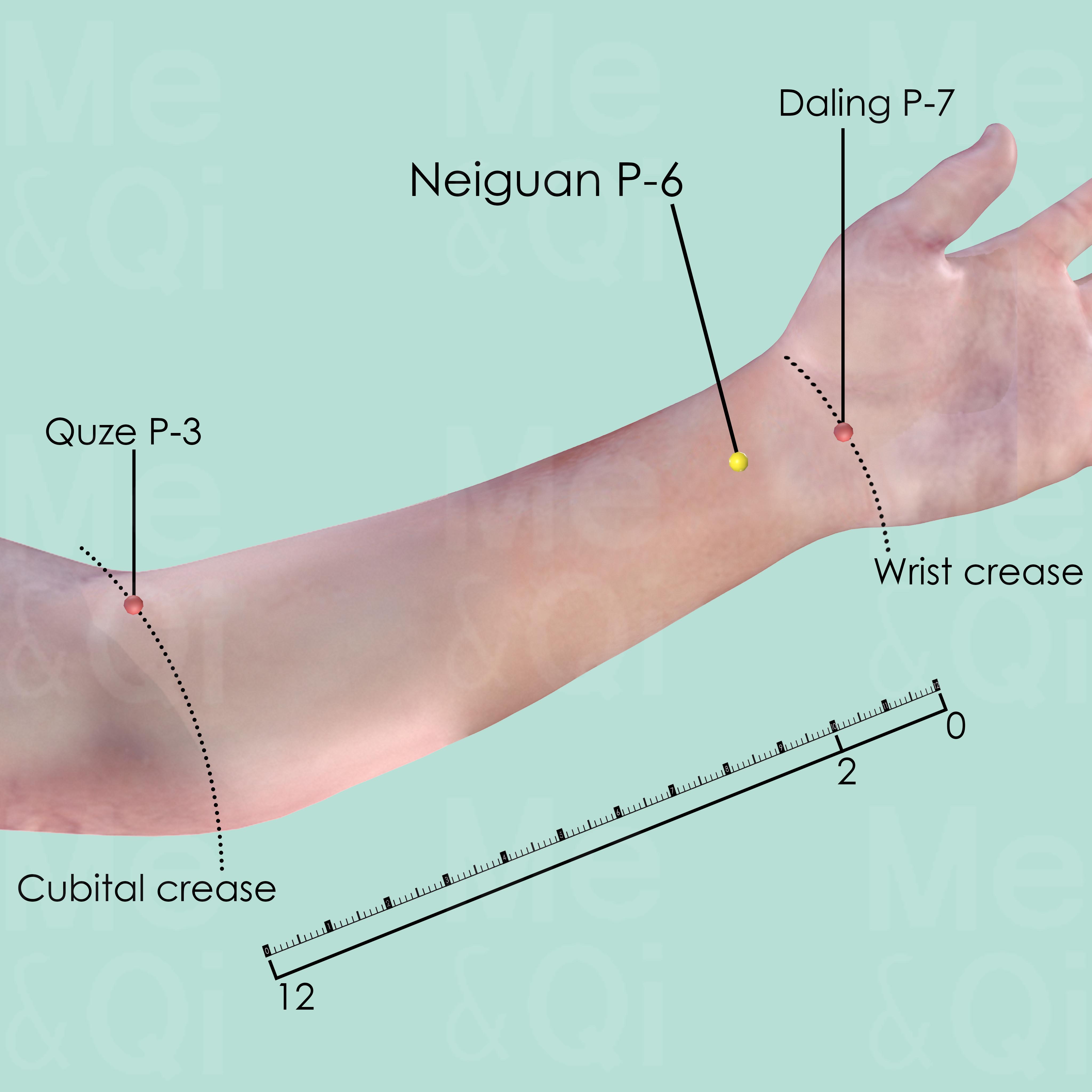
Neiguan P-6
2 cun above Daling P-7 on the transverse crease of the wrist, between the tendons of palmaris longus and flexor carpi radialis muscle.
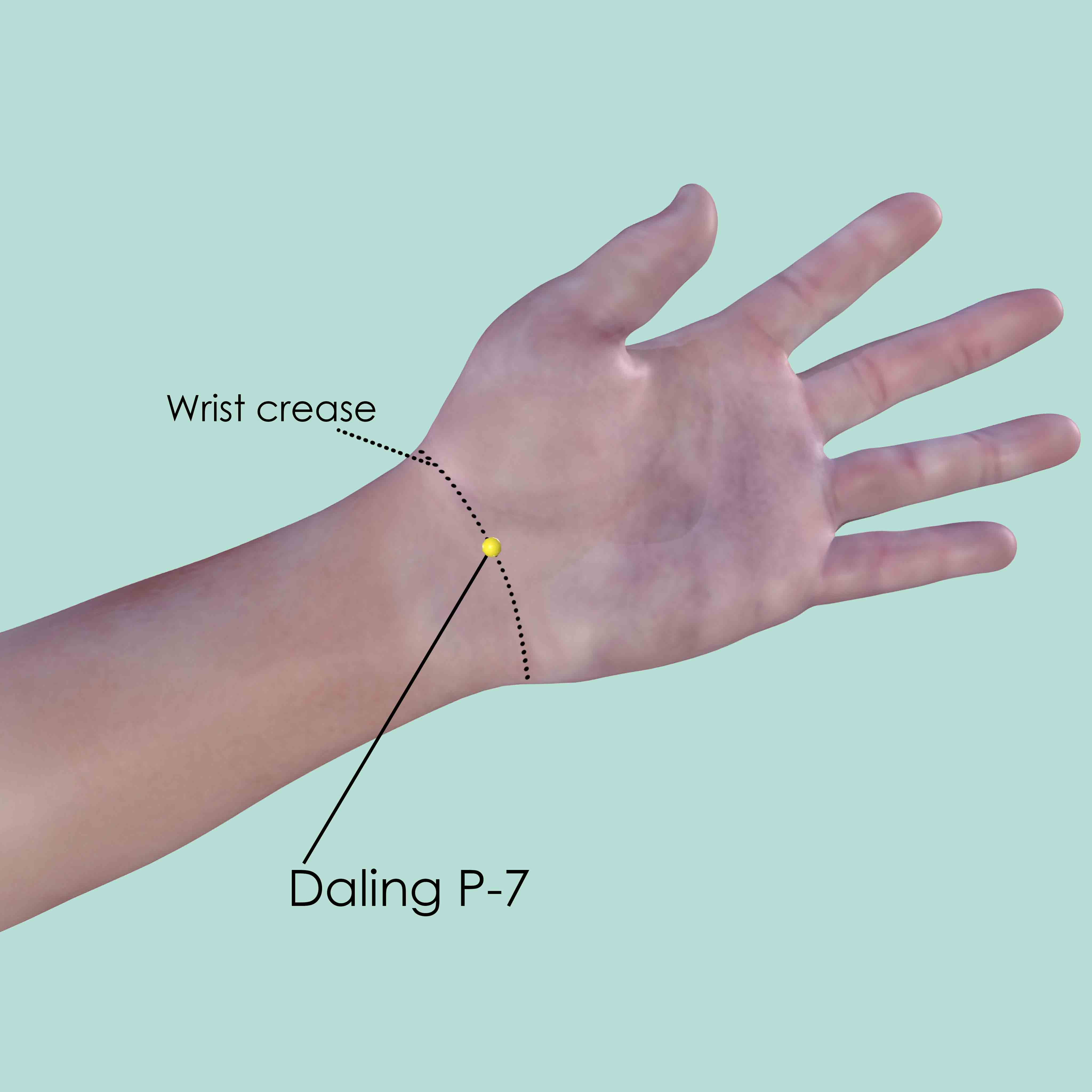
Daling P-7
In the depression in the middle of the transverse crease of the wrist, between the tendons of palmaris longus and flexor carpi radialis muscle.
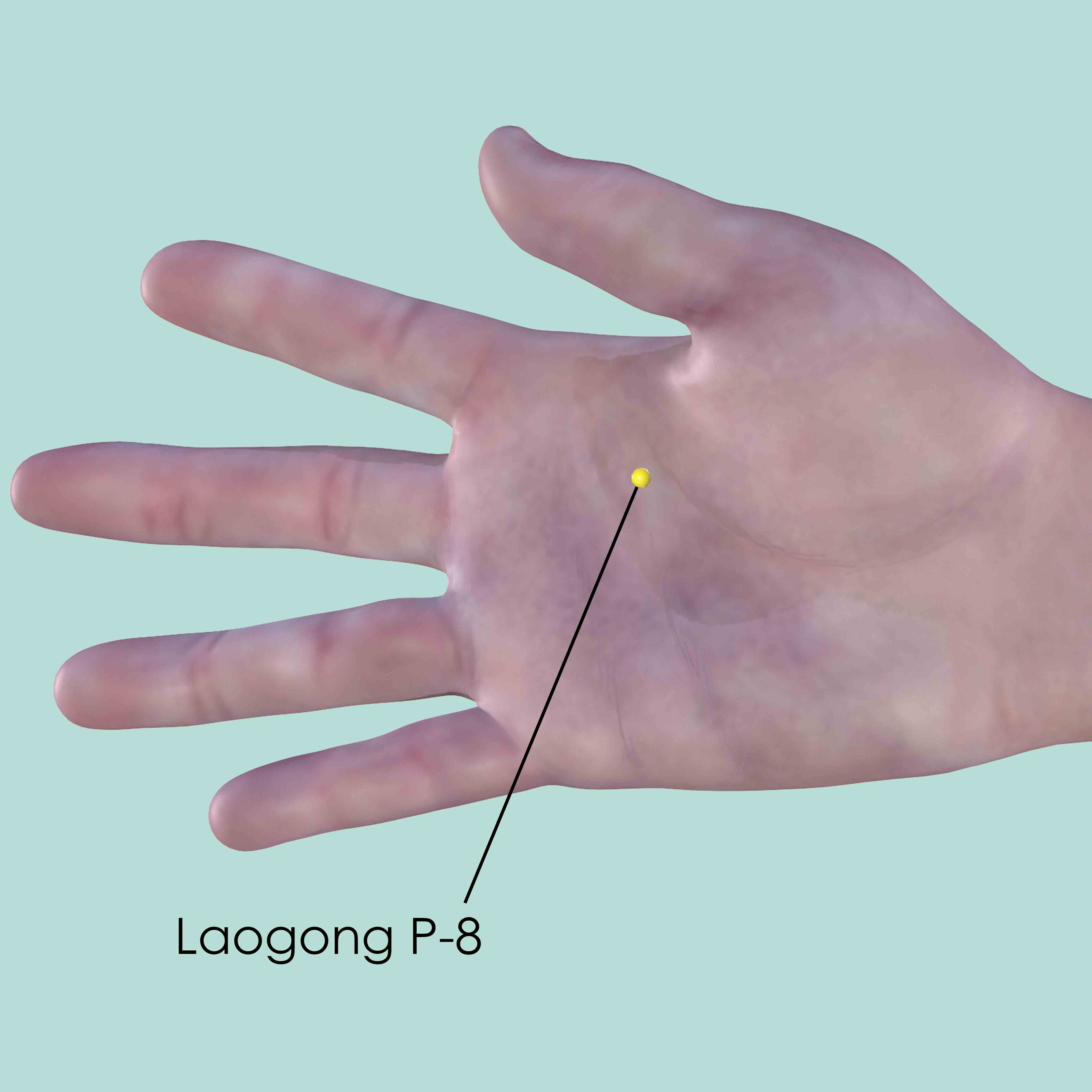
Laogong P-8
In the center of the palm, between the 2nd and the 3rd metacarpal bones, proximal to the metacarpophalangeal joint.
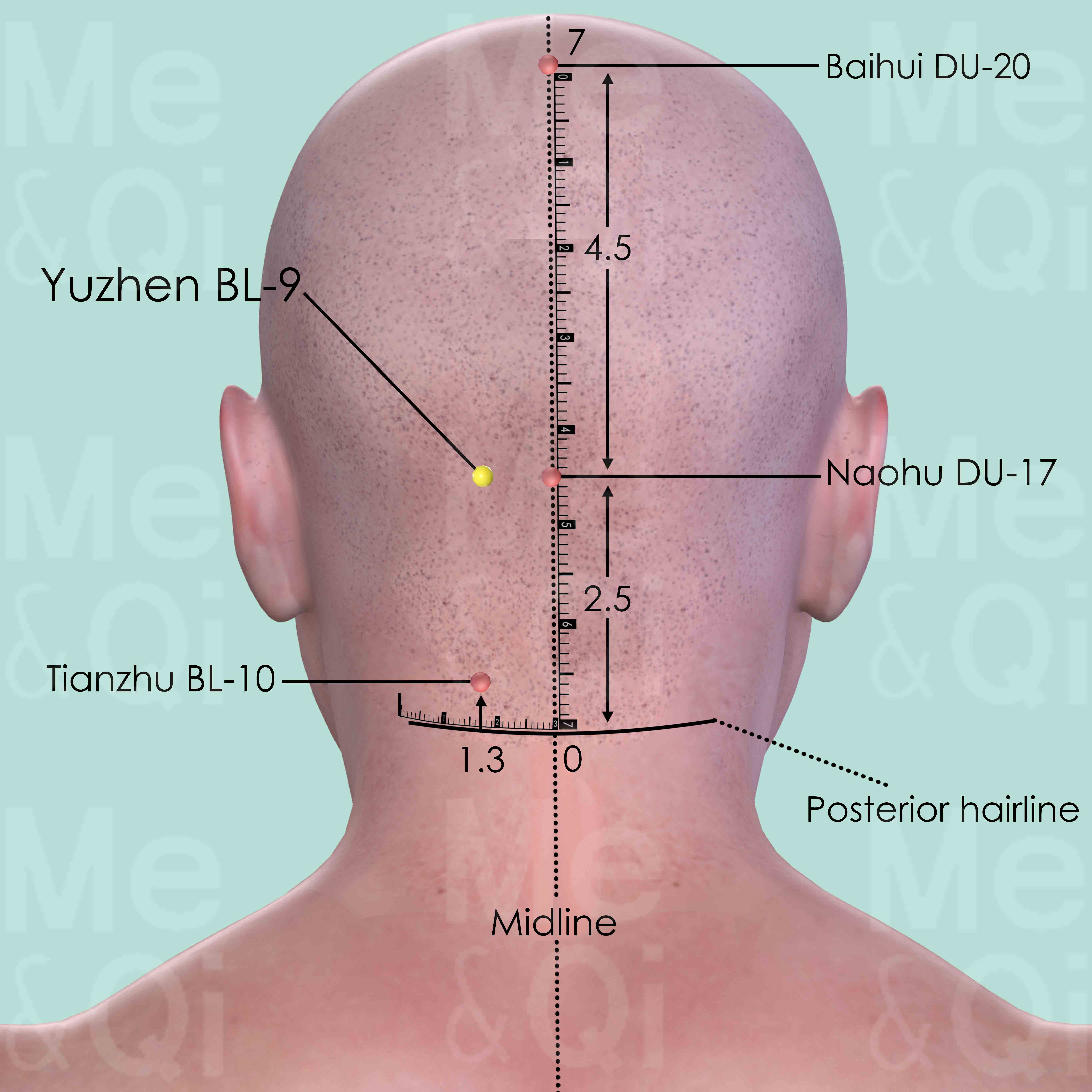
Yuzhen BL-9
First identify Naohu DU-17 which is on the superior border of the external occipital protuberance. Yuzhen BL-9 is 1.3 cun lateral to Naohu DU-17.
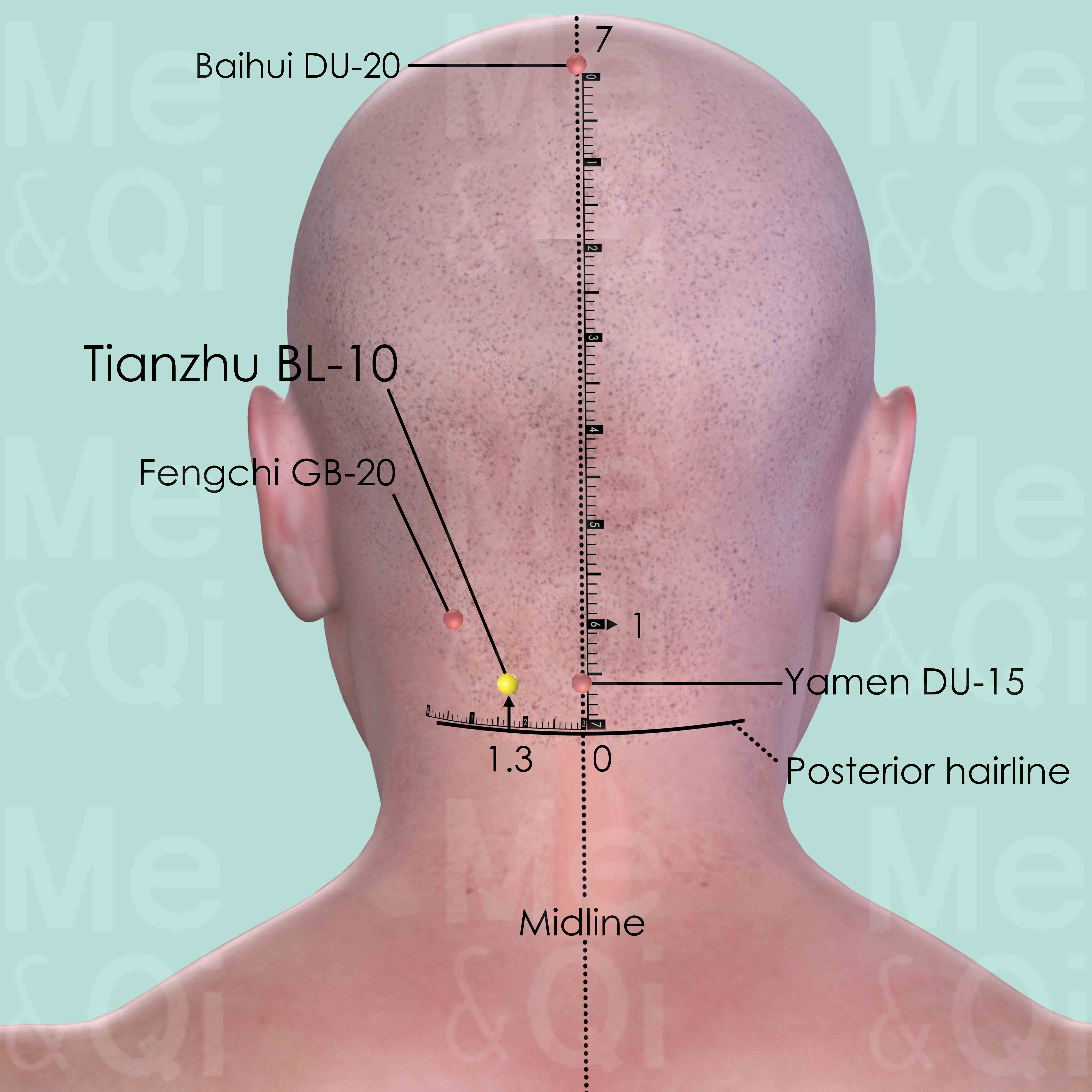
Tianzhu BL-10
1.3 cun lateral to Yamen DU-15 on the posterior midline, 0.5 cun above the posterior hairline, on the lateral side of trapezius muscle.
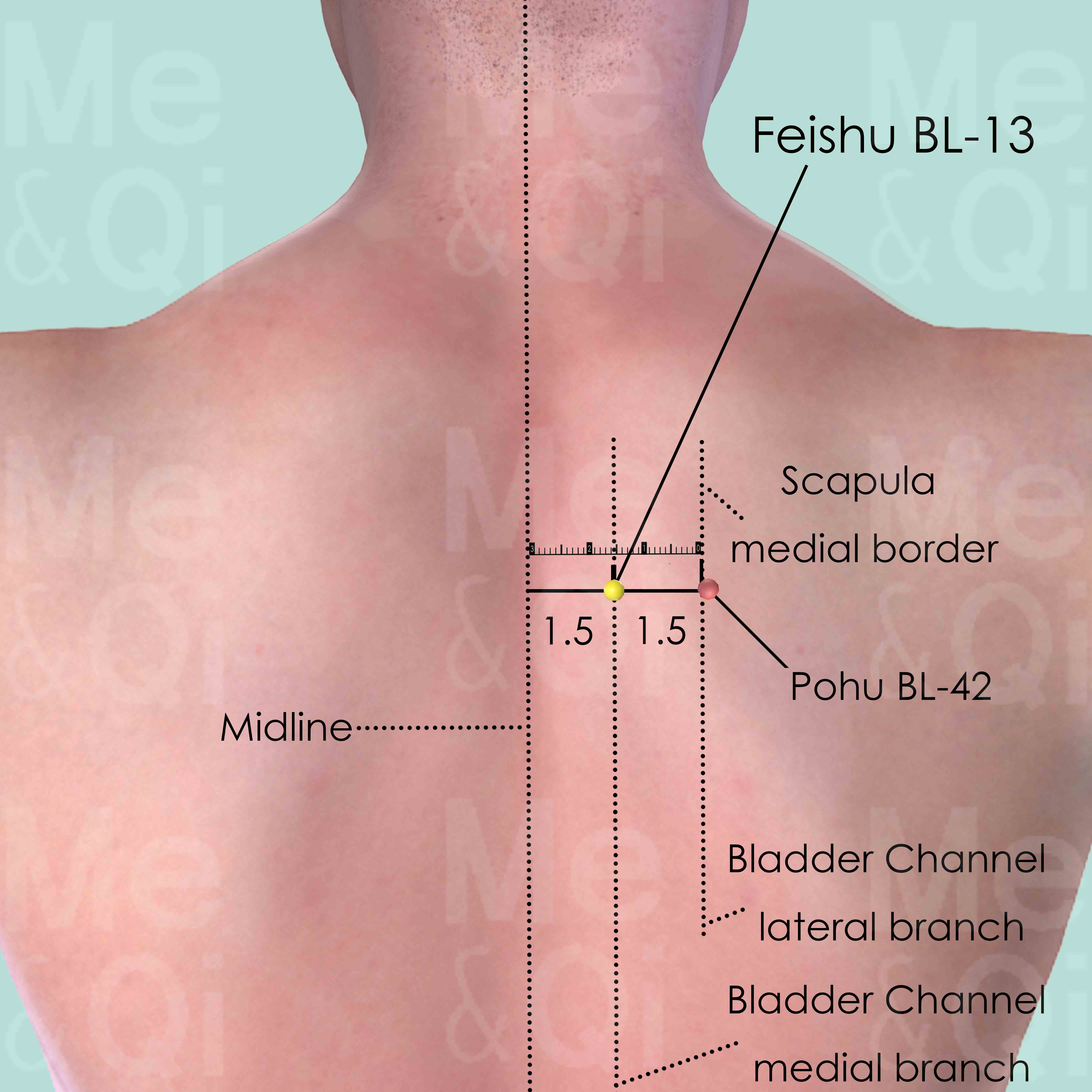
Feishu BL-13
1.5 cun lateral to the lower border of the spinous process of the 3rd thoracic vertebra (T3).
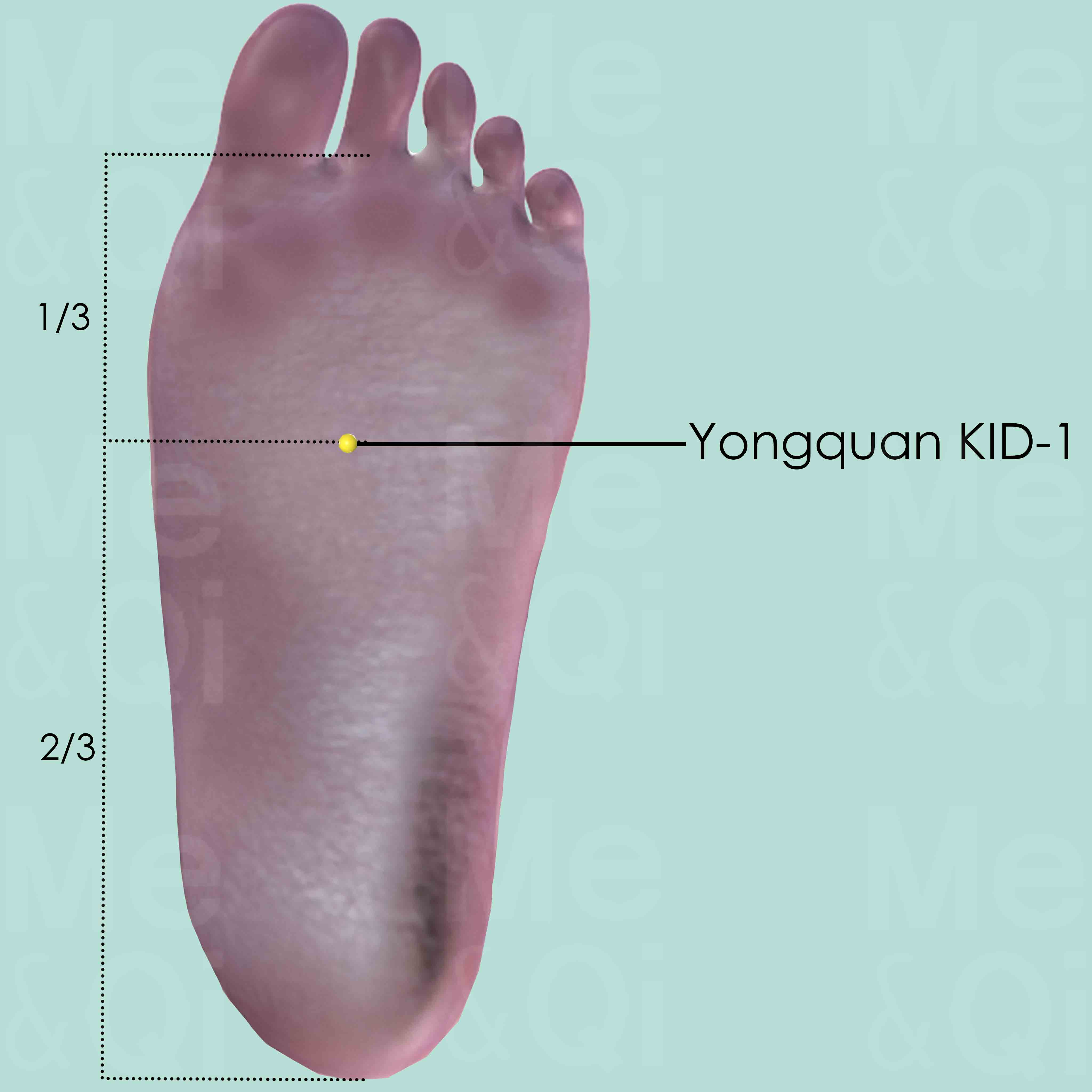
Yongquan KID-1
In the depression between the 2nd and 3rd metatarsal bones on the sole when the foot is in plantar flexion, approximately at the junction of the anterior and middle third of the sole.
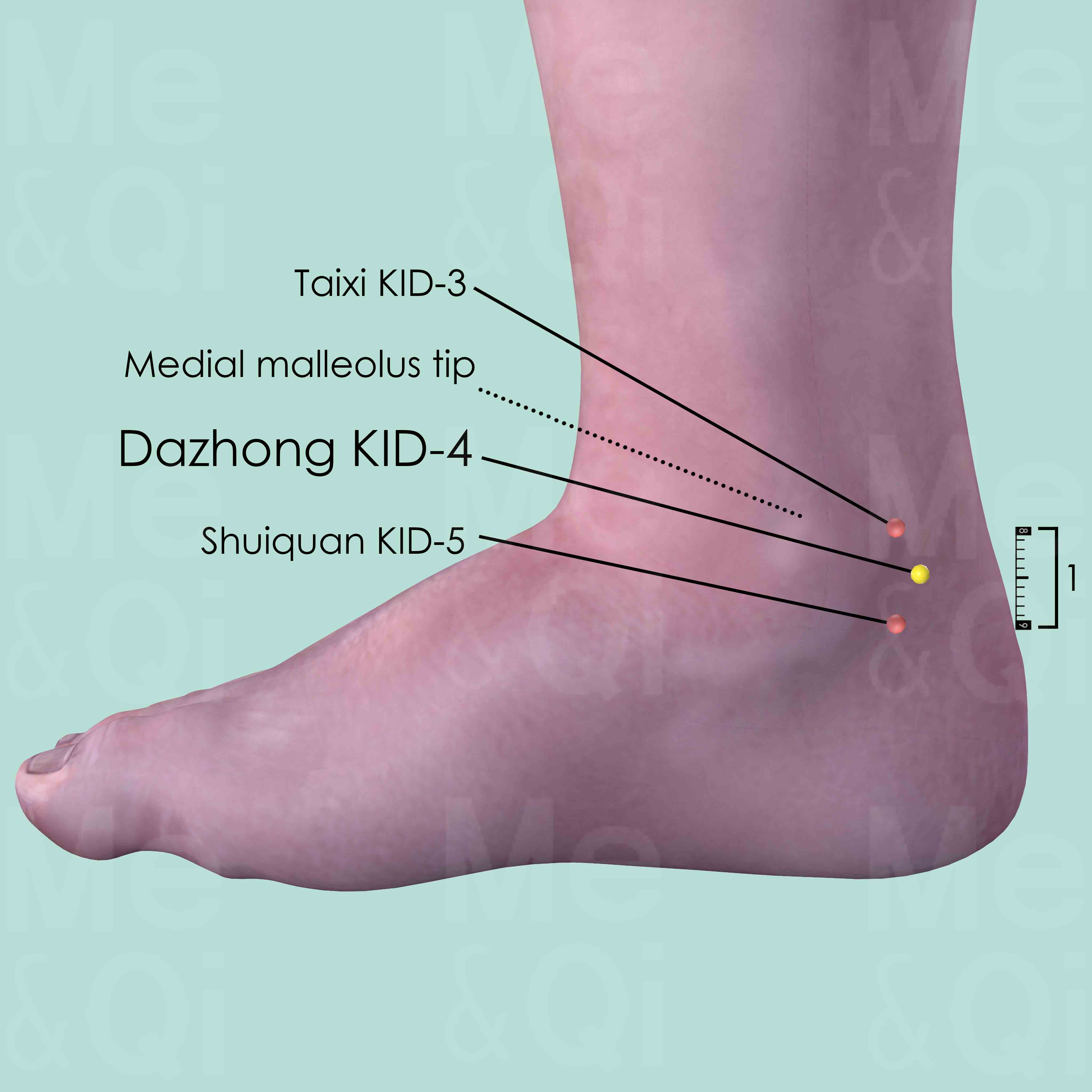
Dazhong KID-4
Posterior and inferior to the medial malleolus, in the depression medial to the Achilles tendon, superior to its insertion at the calcaneus.
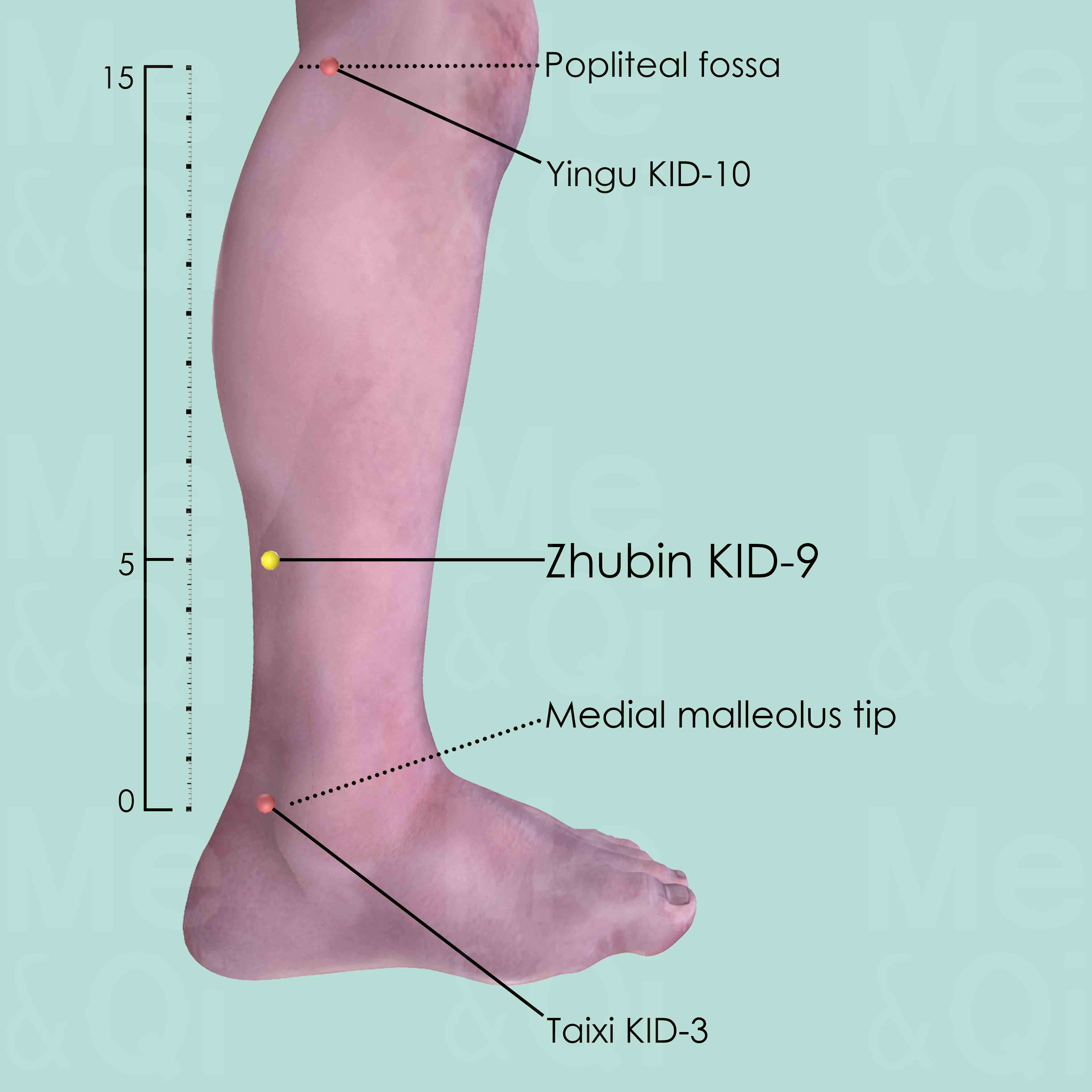
Zhubin KID-9
On the line drawn from Taixi KID-3 to Yingu KID-10. It is located at the lower end of the belly of gastrocnemius muscle in the medial aspect, about 5 cun above Taixi KID-3.
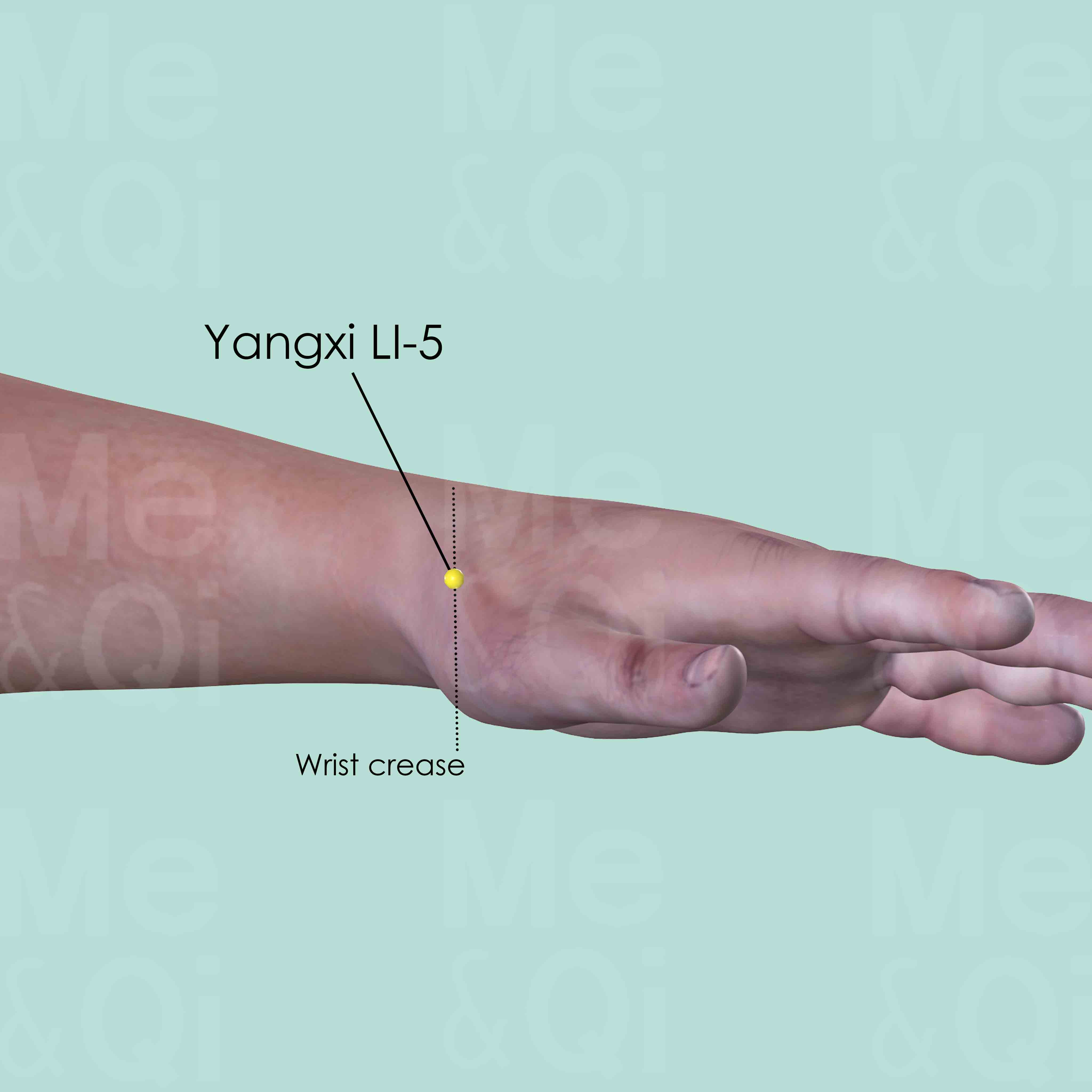
Yangxi LI-5
On the radial side of the wrist. When the thumb is tilted upward, it is in the depression on the wrist joint space (wrist crease) between the tendons of extensor pollicis longus and brevis muscles.
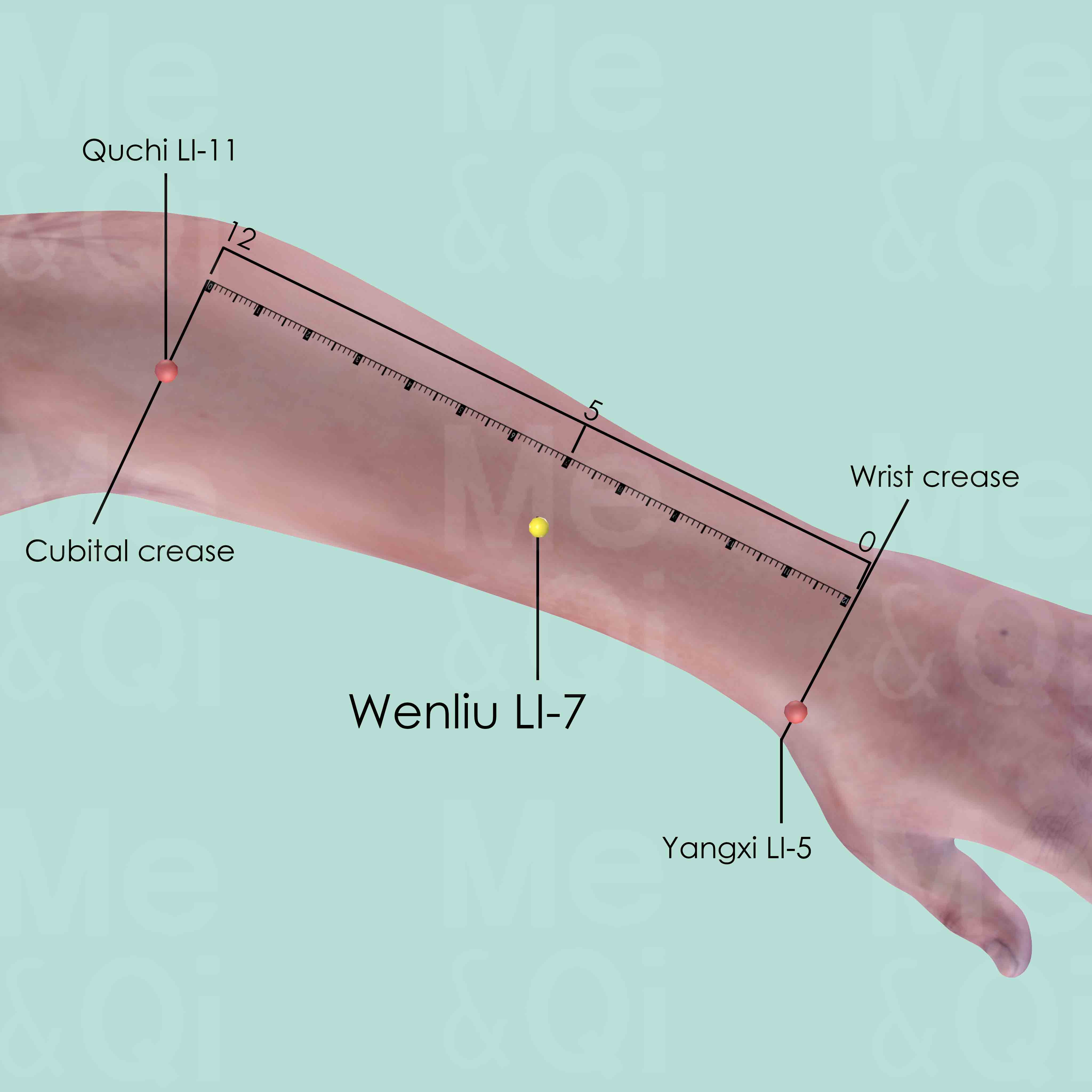
Wenliu LI-7
When a fist is made, with the ulnar side downward and elbow flexed, the point is 5 cun above Yangxi LI-5 at the wrist crease, 1 cun distal to the midpoint of the line joining Yangxi LI-5 and Quchi LI-11.
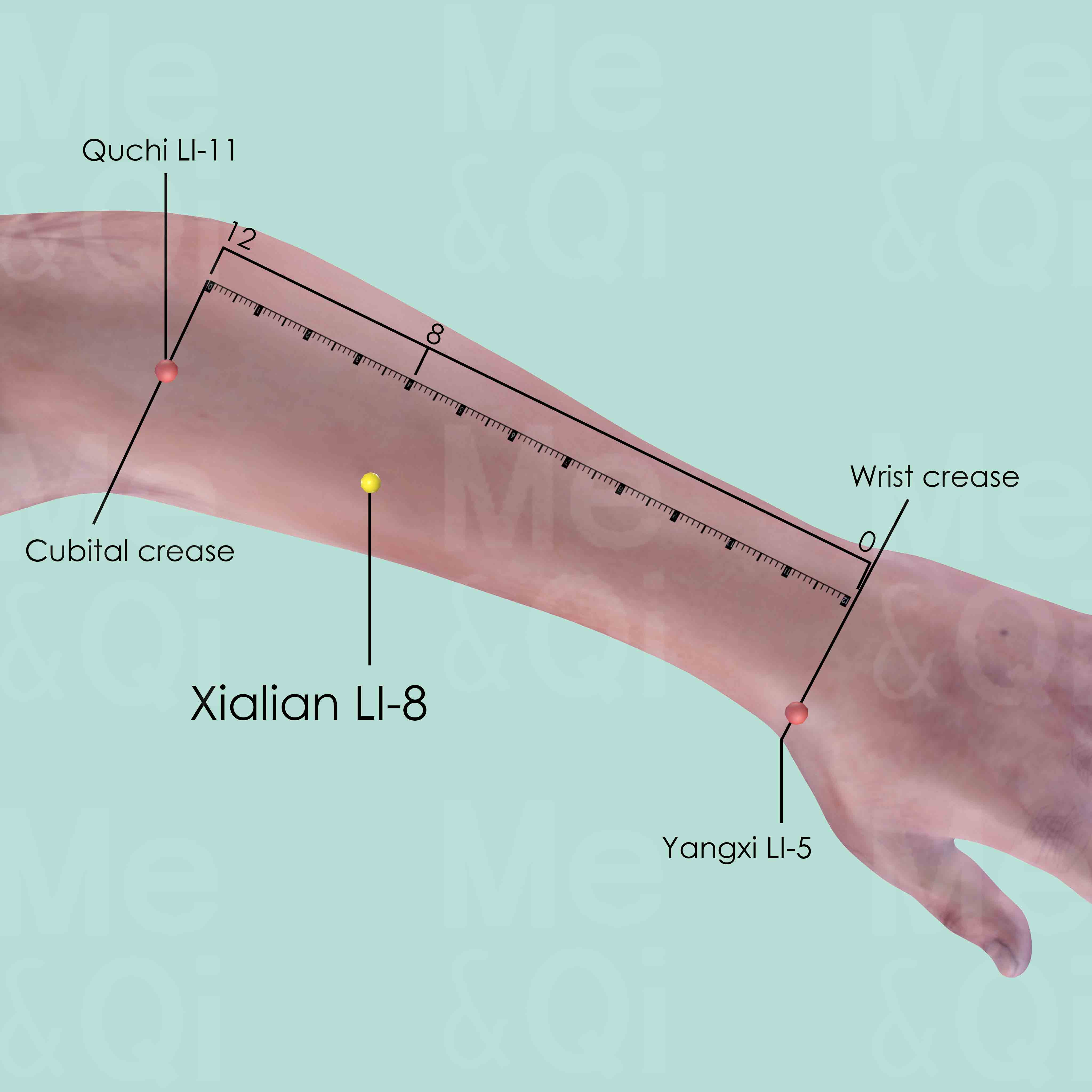
Xialian LI-8
When a fist is made, with the ulnar side downward and elbow flexed, the point is 4 cun distal to Quchi LI-11 of the line joining Yangxi LI-5 and Quchi LI-11.
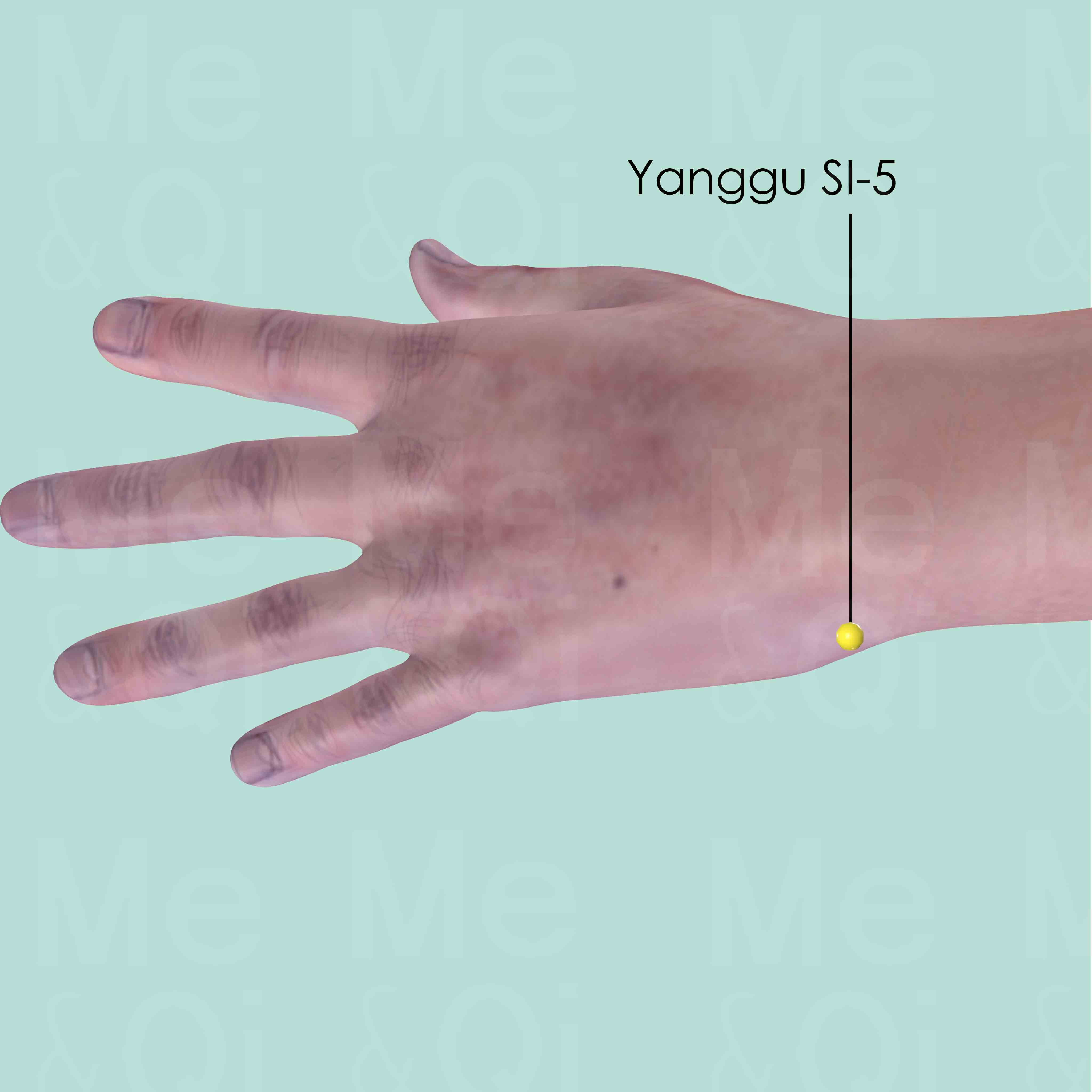
Yanggu SI-5
On the ulnar side of the wrist, in the depression between the styloid process of the ulna and the triquetral bone.
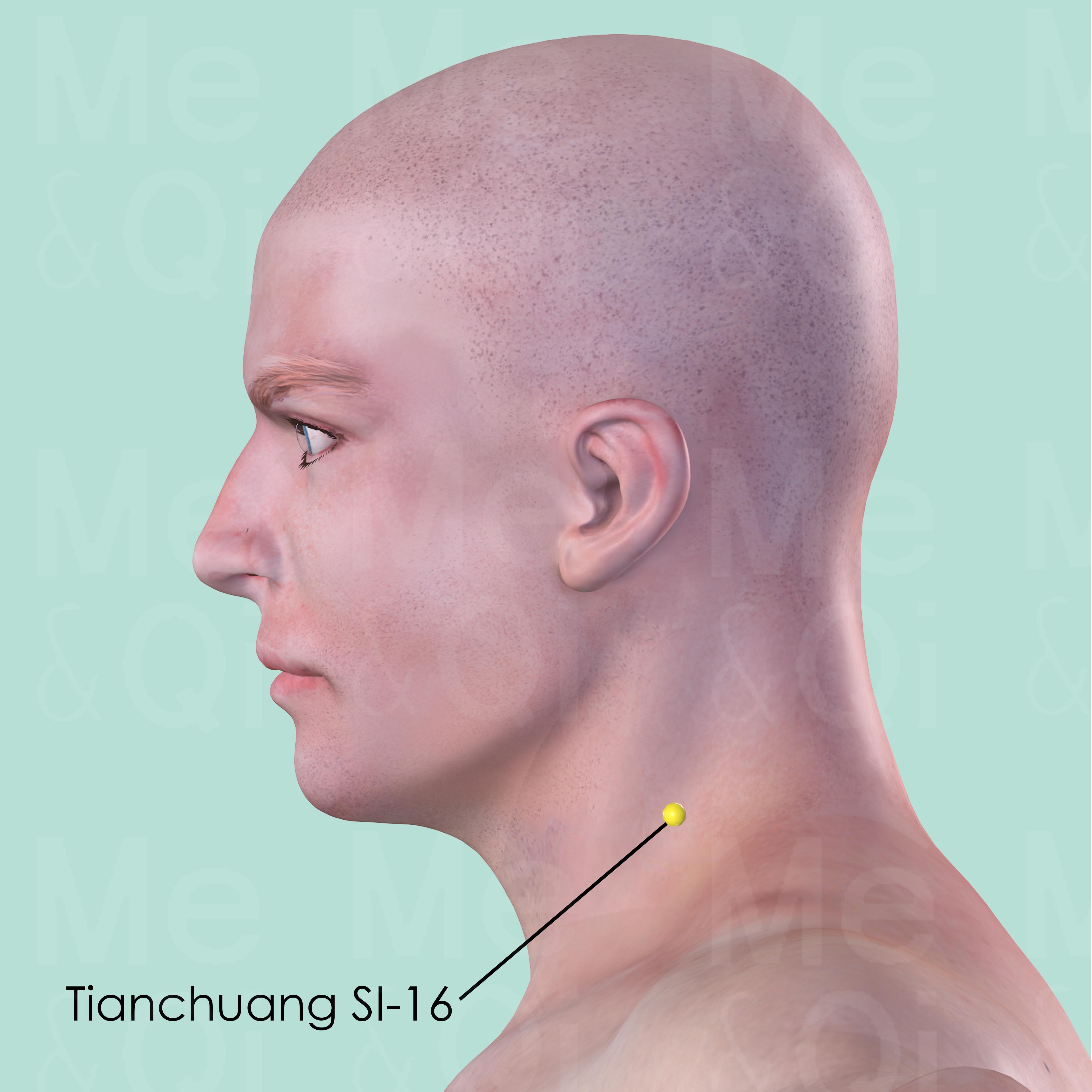
Tianchuang SI-16
In the lateral aspect of the neck, on the posterior border of sternocleidomastoid muscle, lever with the Adam's apple.
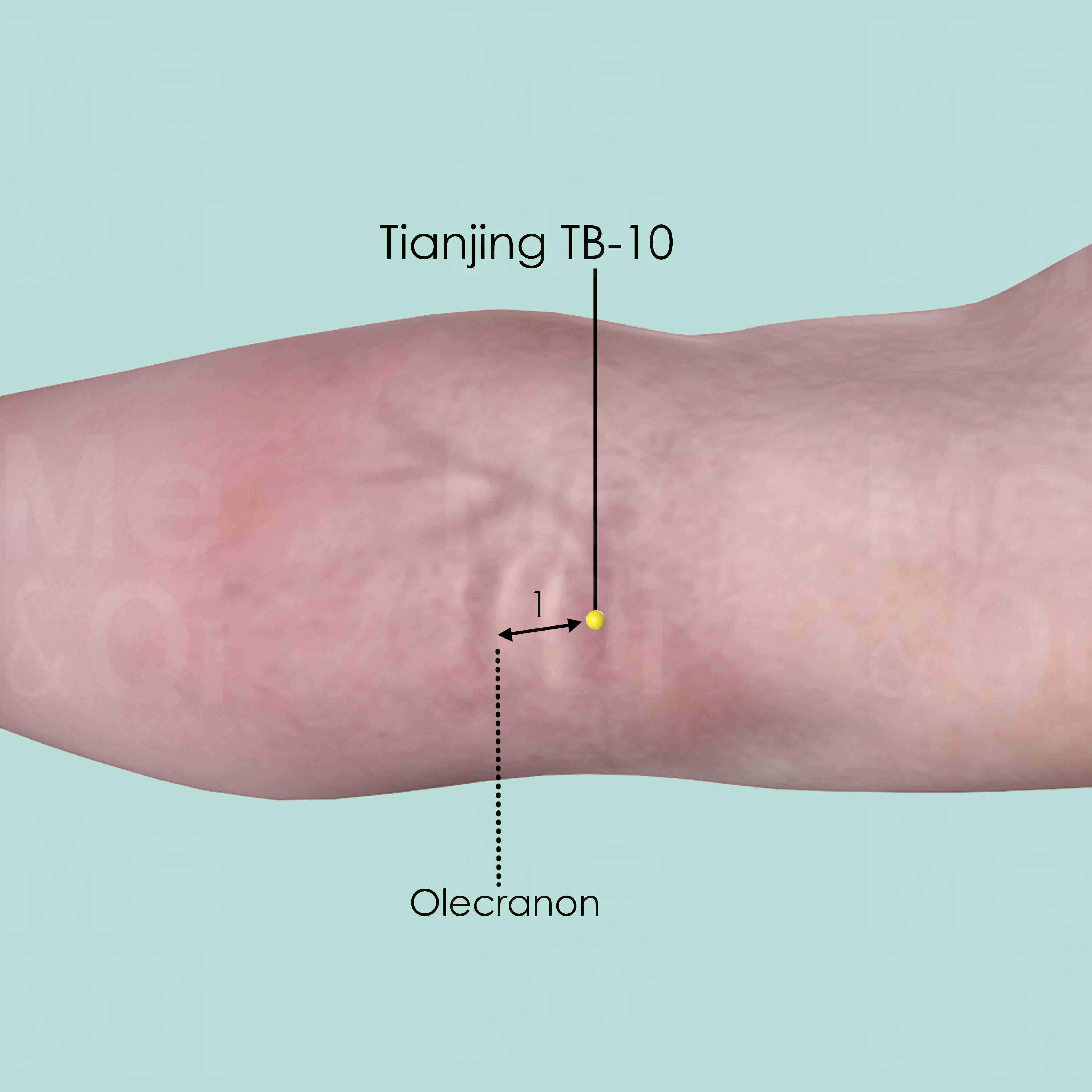
Tianjing TB-10
When the elbow is flexed, Tianjing TB-10 is in the depression about 1 cun superior to the olecranon.
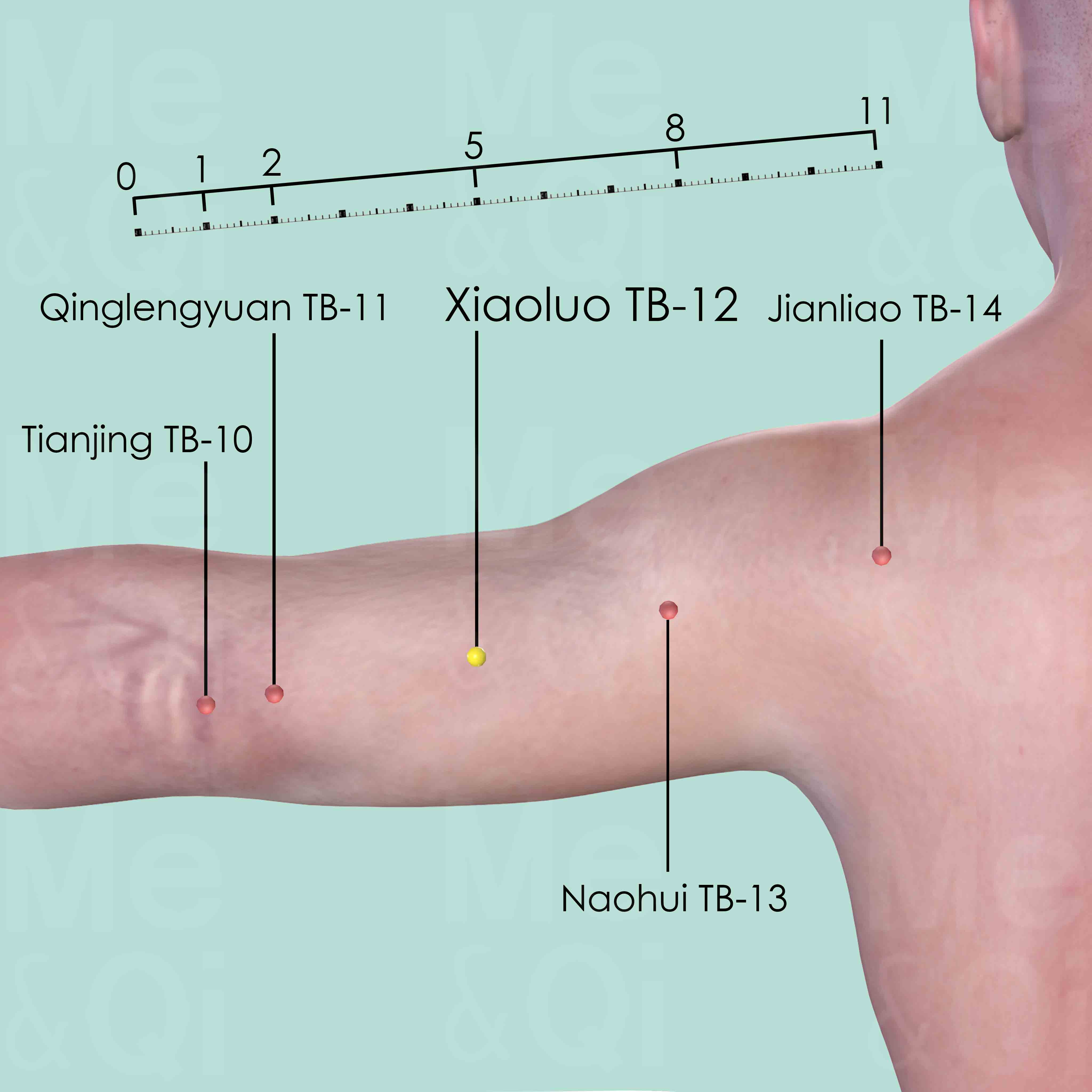
Xiaoluo TB-12
On the line joining the olecranon and Jianliao TB-14, midway between Qinglengyuan TB-11 and Naohui TB-13, 5 cun proximal to the olecranon. It is just on the lower end of bulge of the lateral head of triceps brachii when the forearm is in pronation.
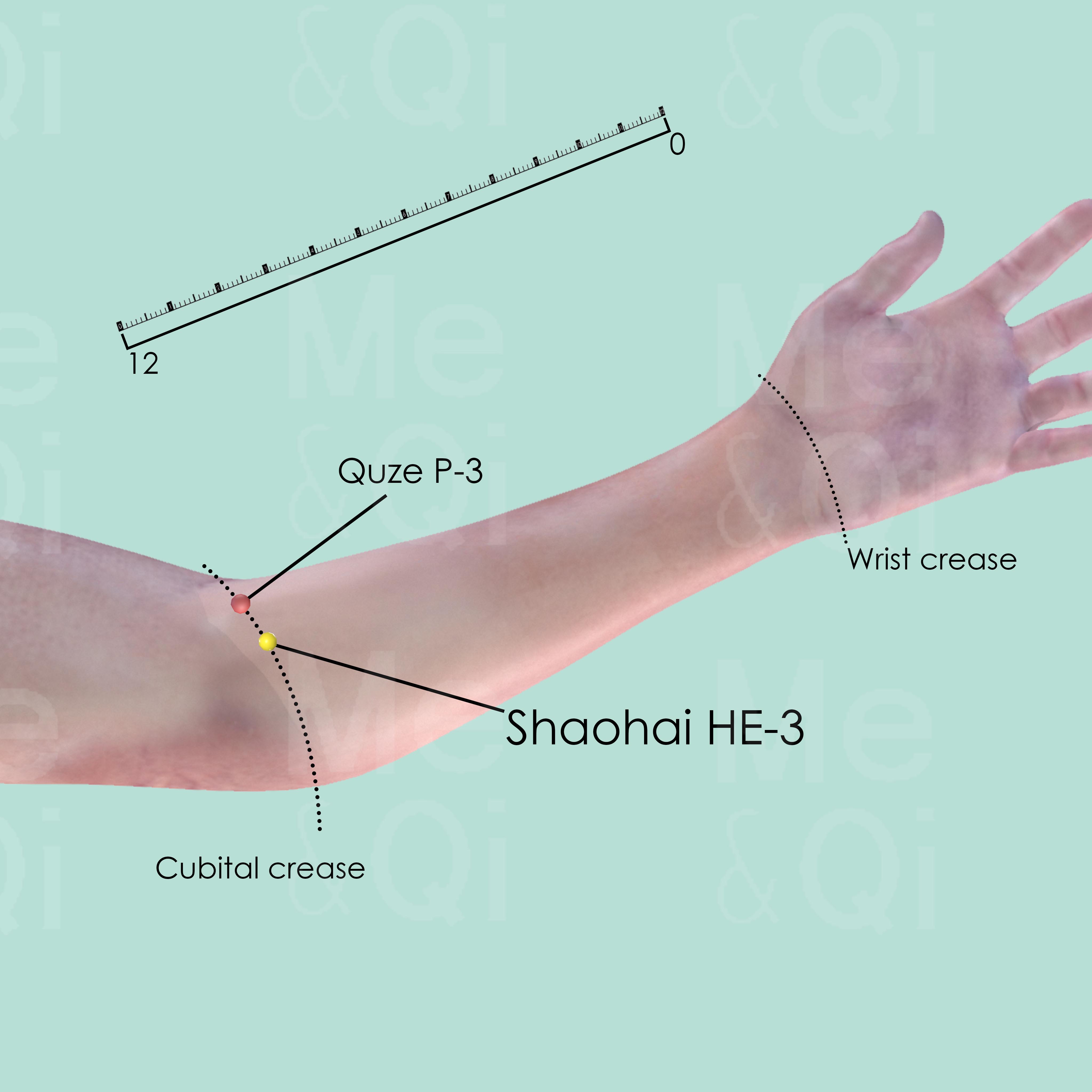
Shaohai HE-3
When the elbow is flexed slightly, Shaohai HE-3 is at the medial end of the transverse cubital crease, in the depression radius to the medial epicondyle of the humerus.
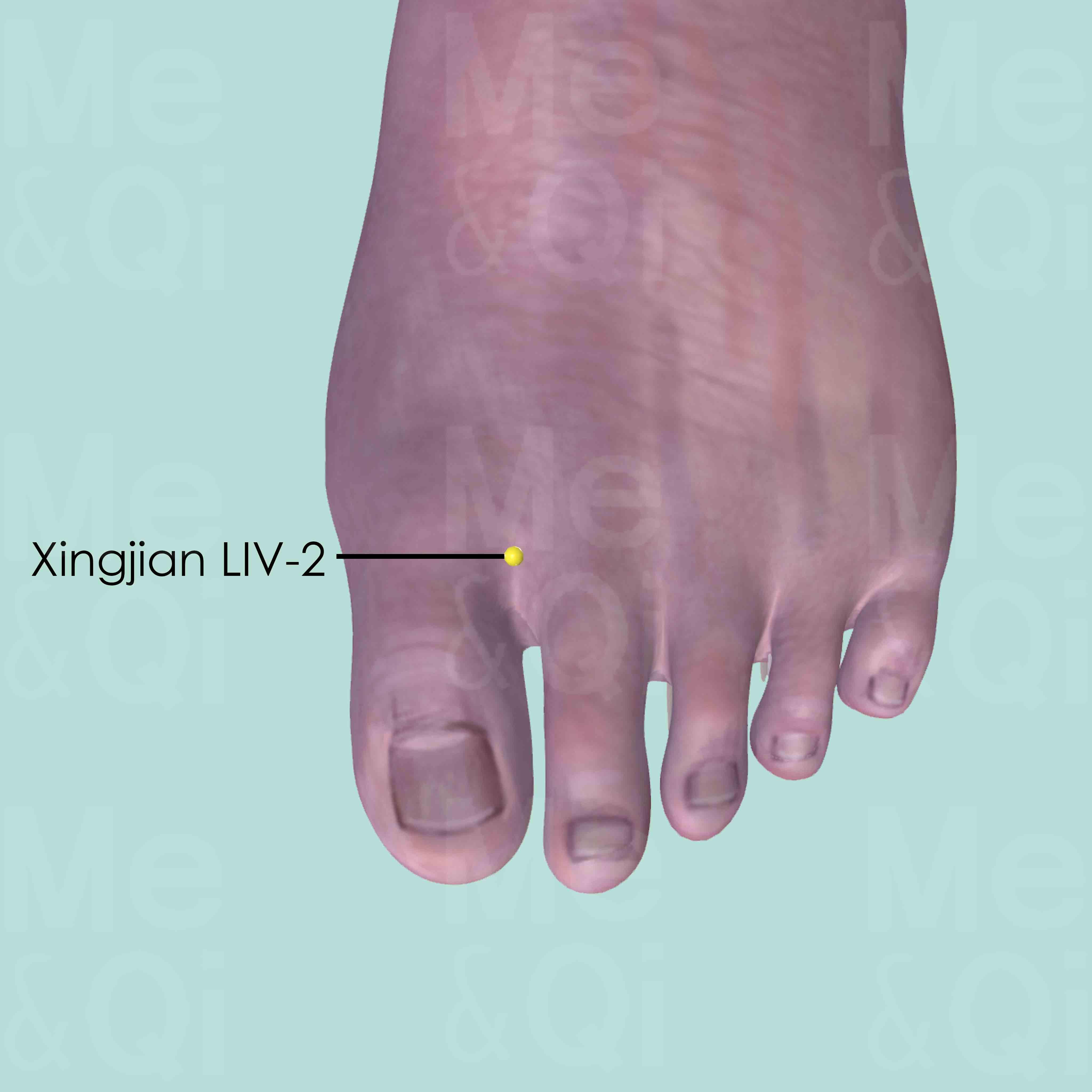
Xingjian LIV-2
Between the first and second toe, on the dorsum of the foot, 0.5 cun proximal to the interdigital fold.
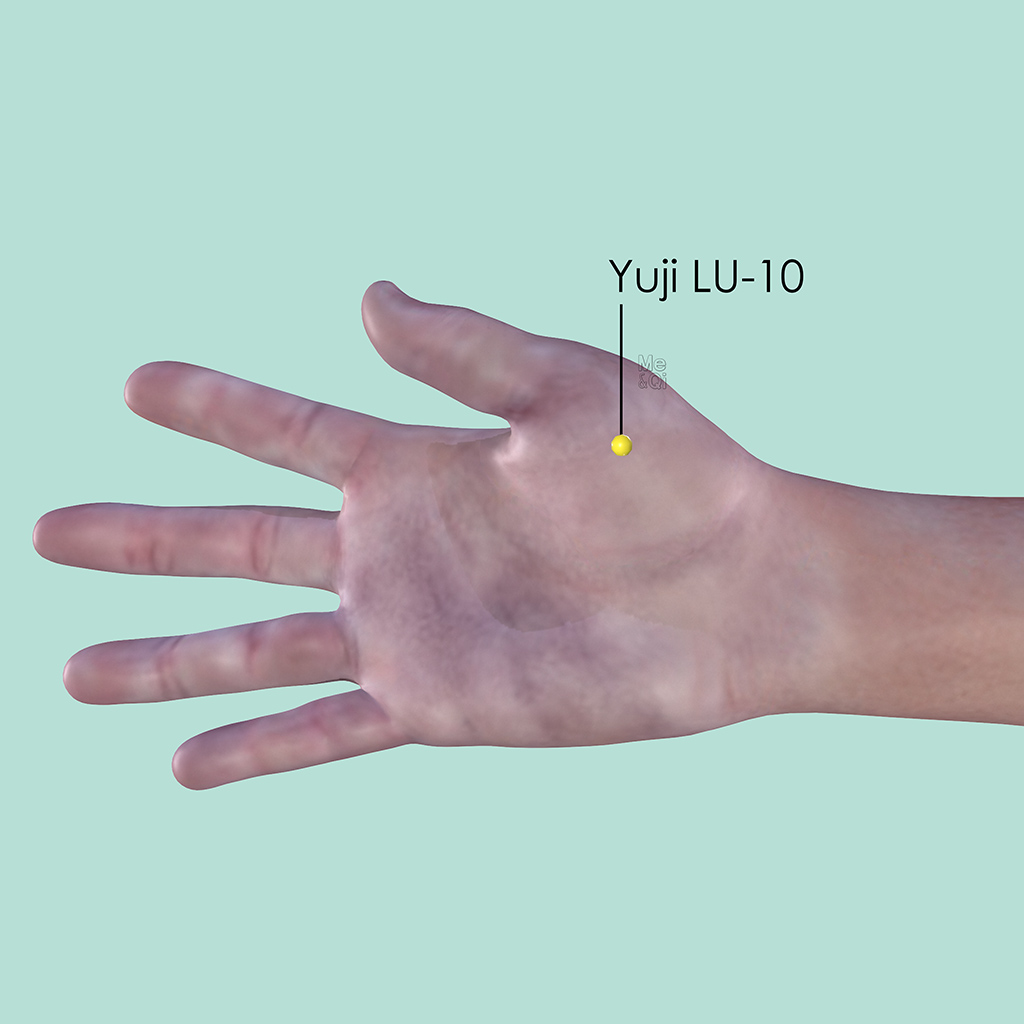
Yuji LU-10
On the radial aspect of the midpoint of the first metacarpal bone, on the junction of the red and white skin (the junction of the dorsum and palm of the hand).

